C eramic W orld



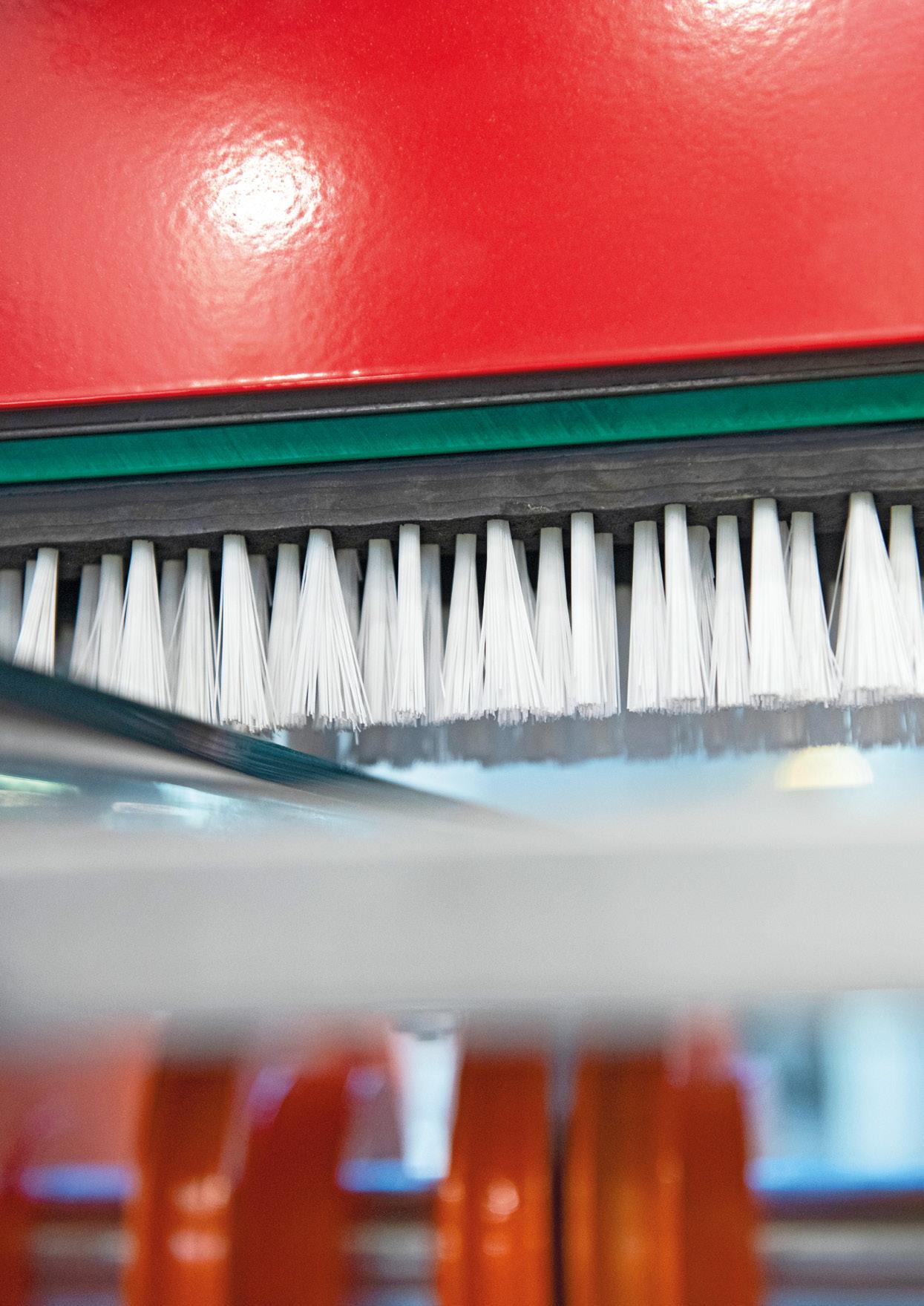
technology news markets
R eview
Indian Ceramics Asia 2023 Indian Ceramics Asia 2023
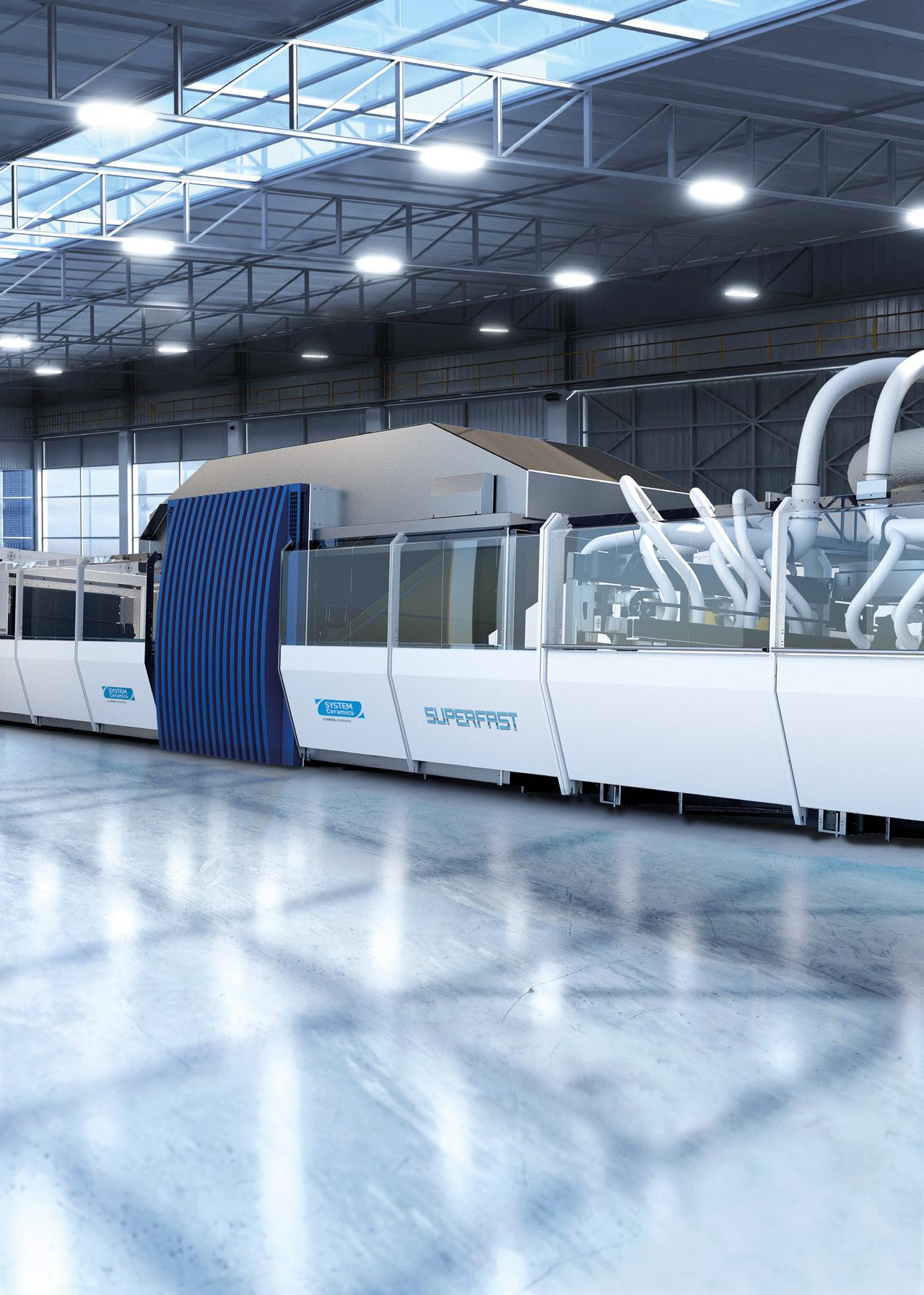

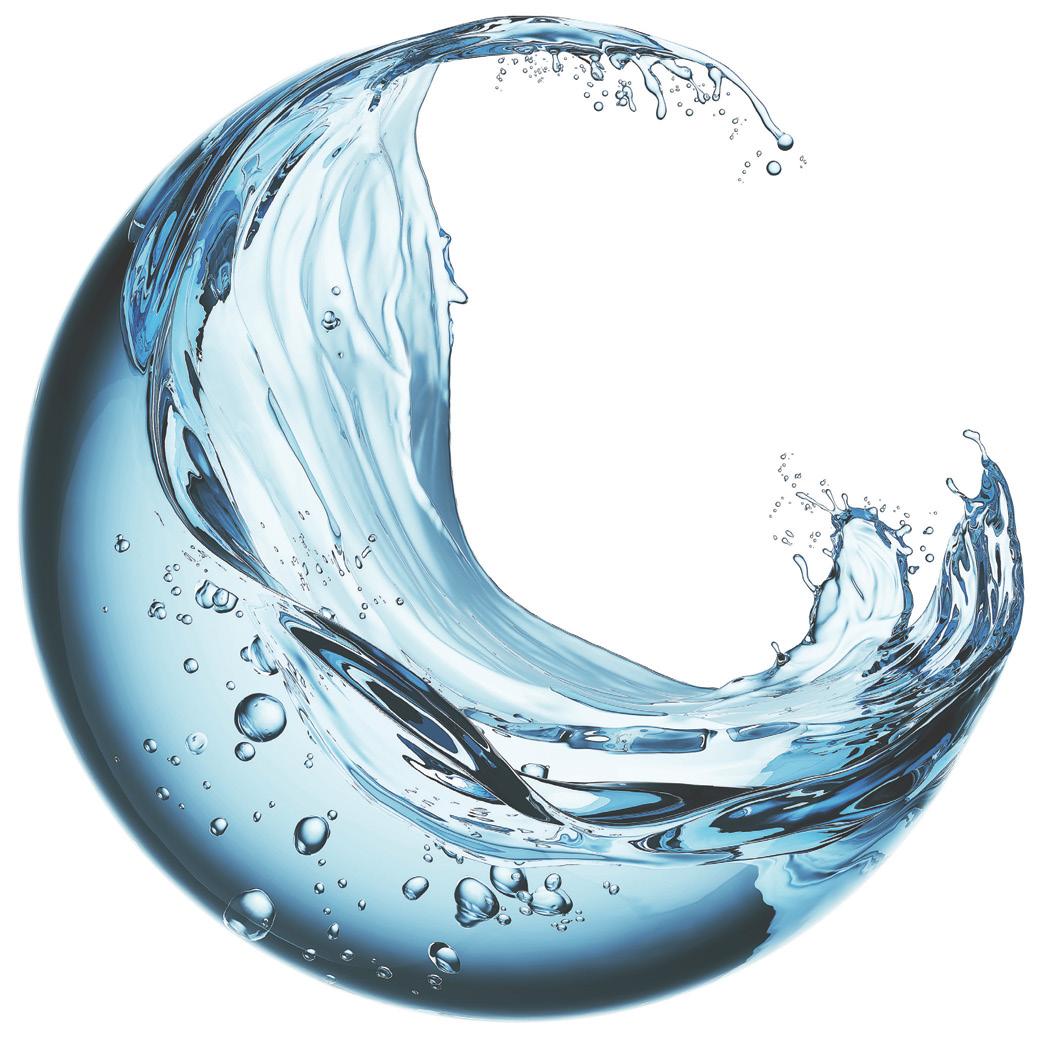 Giancarlo Pradelli
Giancarlo Pradelli
Year 33
Supplement to no. 150
February/March 2023
Bimonthly Review
7 E ditorial
8 N E ws
12 t E c N a
16 i N t E rvi E w
20
24 t E ch N ology
26
30
32
34
42 s a N itarywar E
44
52
Welcome to Indian Ceramics Asia 2023! Paola Giacomini Hkkjrh; fljsfeDl ,f'k;k 2023 esa Lokxr gS!
world NEws foÜo lekpkj
Tecna 2022 surpasses all expectations VsDuk 2022 us lHkh mEehnksa dks ikj fd;k
Kajaria Ceramics accelerates its growth
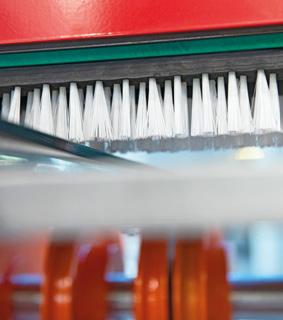
Milena Bernardi dtkfj;k fljsfeDl us viuh o`f) dks rst fd;k
Somany Ceramics set for strong growth
Milena Bernardi 'kkunkj o`f) ds fy, rS;kj lksekuh fljsfeDl
The sustainable future of ceramic body preparation LB Group fljsfed bdkà cukus dk LFkk;h Hkfo";
Slabs and sub-sizes: high flexibility and a productivity of 21,500 sqm/day Sacmi LySCl vkSj lc&lkbt % mPp yphykiu vkSj 21500 oxZehVj çfrfnu dh mRikndrk
Sustainability as driver of change in the industry Esmalglass-Itaca Group m|ksx esa ifjorZu ds pkyd ds :i esa fLFkjrk
Exploring the potential of three-dimensional ceramic surfaces System Ceramics f=ferh; fljsfed lrgksa dh {kerk dks igpkuuk
Dry grinding powder recycling
Marco Sichi 'kq"d xzkbaÇMx ikmMj dk iqupZØ.k
Greater productivity in high-pressure casting Lamberti mPp ncko dkÇLVx esa T;knk mRikndrk
Low-energy drying of sanitaryware and tableware Setec lsfuVjhos;j vkSj Vscyos;j dks de&ÅtkZ ij lq[kkuk
Safer and more versatile and sustainable tunnel kilns Sacmi Whiteware lqjf{kr] T;knk fofoèk vkSj fVdkÅ Vuy Hkfë;ka
58 Products mRikn
contents
Cover picture by:
CWR INDIA 2023 3
Publisher
Administration and Editorial Office
KAIROS MEDIA GROUP srl
Via Fossa Buracchione, 84 - 41126 Baggiovara (MO) - Italy
Tel. +39 059 512103 - Fax +39 059 512157 - info@tiledizioni.it
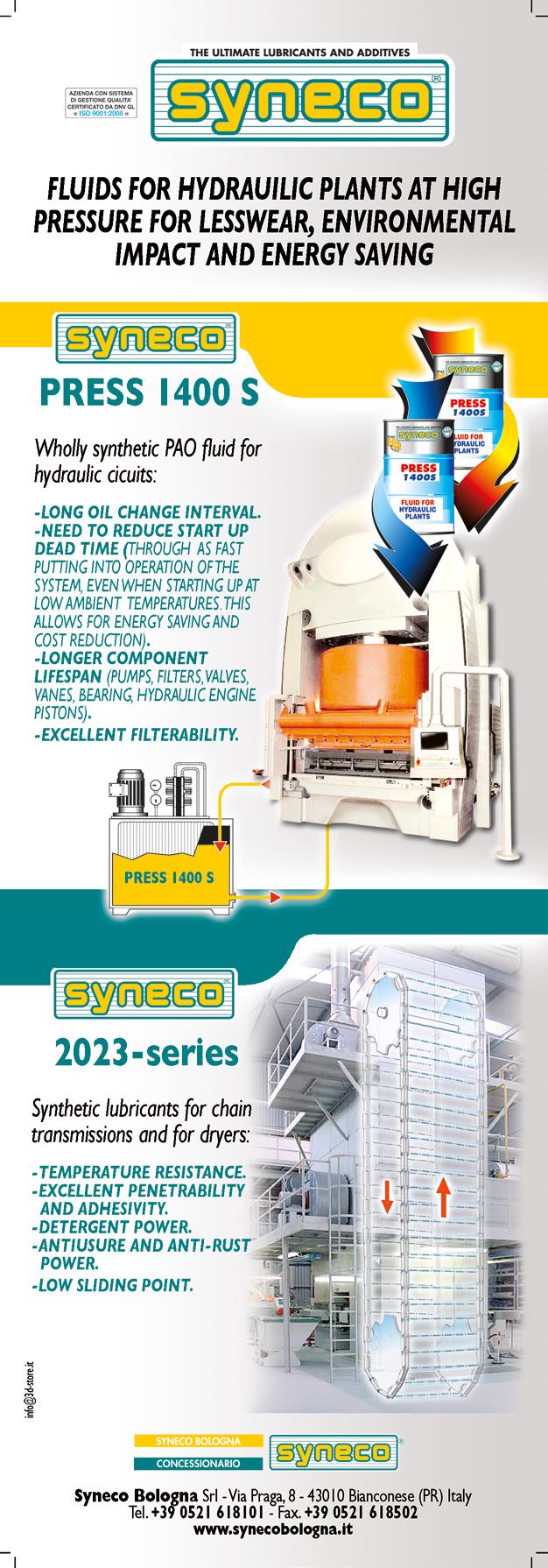
CEO Gian Paolo Crasta g.crasta@tiledizioni.it
Editor Paola Giacomini p.giacomini@tiledizioni.it
Editorial Board
Luca Baraldi, Milena Bernardi, Cristian Cassani, Omar Gubertini, Francesco Incerti, Paola Rolleri, Ilaria Vesentini
Advertising
KAIROS MEDIA GROUP:
Tel. +39 059 512103
Fax +39 059 512157
Paola Giacomini: Cell. +39 335 1864257 - E-mail: p.giacomini@tiledizioni.it
Silvia Lepore: Cell. +39 345 7218245 - E-mail: s.lepore@tiledizioni.it
Elisa Verzelloni: Cell. +39 338 5361966 - E-mail: e.verzelloni@tiledizioni.it
Translation
JOHN FREEMAN (EN) DILIP KUMAR CHOUDHARY (Hindi) Subscriptions
www.tiledizioni.it/subscription
Each copy € 4
Annual subscription (5 issues): Italy: € 50; International: €70; Special tariffs for group subscriptions are available on request.
Graphic Layout
Sara Falsetti
Photolits • Typesetting
Vaccari Zincografica Srl - Via Salgari, 61 - 41123 Modena - Italy

The Hindi version of the magazine has been published in collaboration with MR. DILIP KUMAR CHOUDHARY C-35, Sector-47, Noida, Uttar Pradesh-201303, (INDIA) Mob.: +91- 9718674379
Entire contents copyright KAIROS MEDIA GROUP. All rights reserved. Opinions expressed by writers are not necessarly those held by the publisher who is not held responsible. Editorial material, manuscripts, photographs, transparencies and artwork will not be returned.
date of going to press: 18/01/2023
promoted by
kairos media group also publishes:
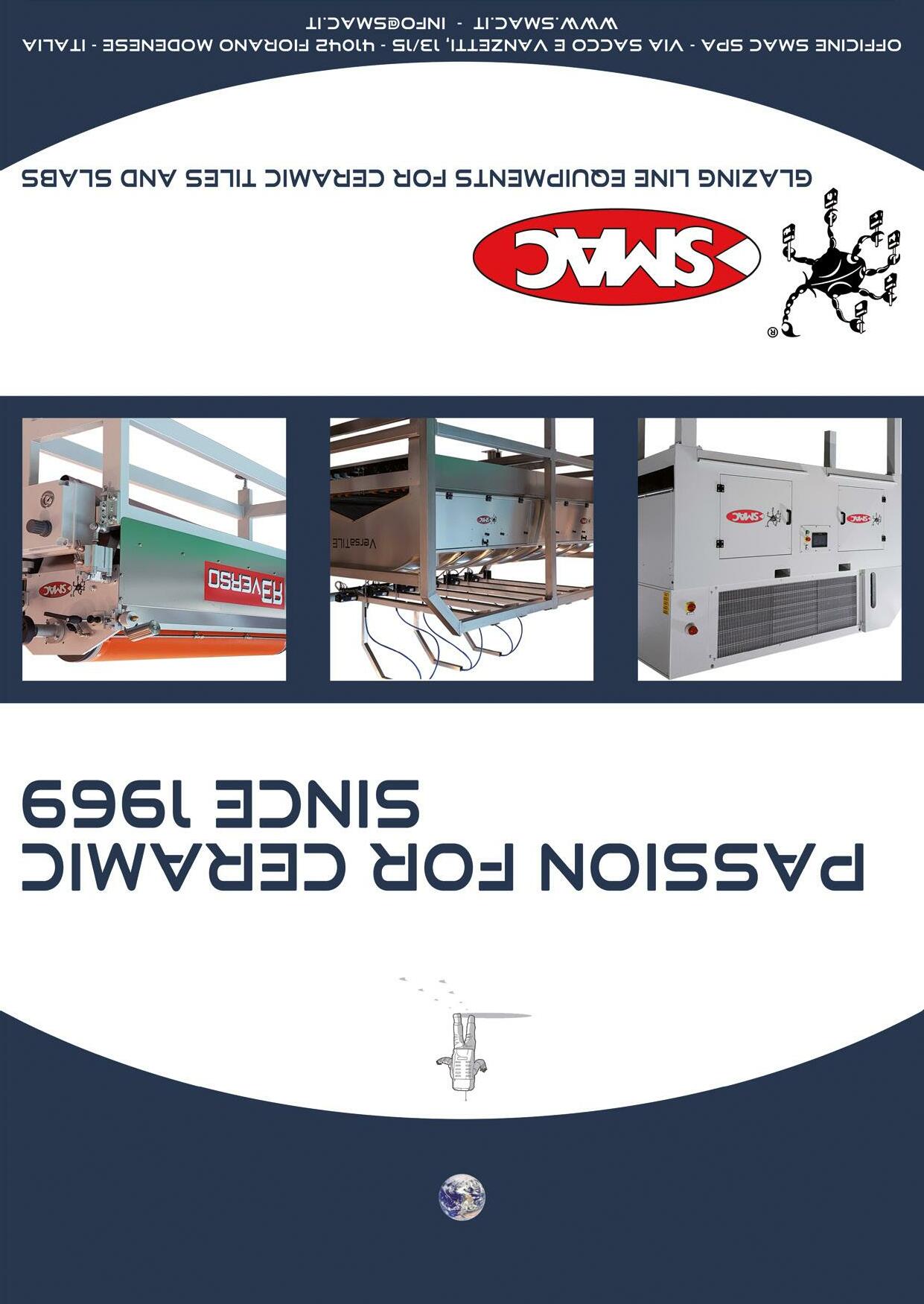



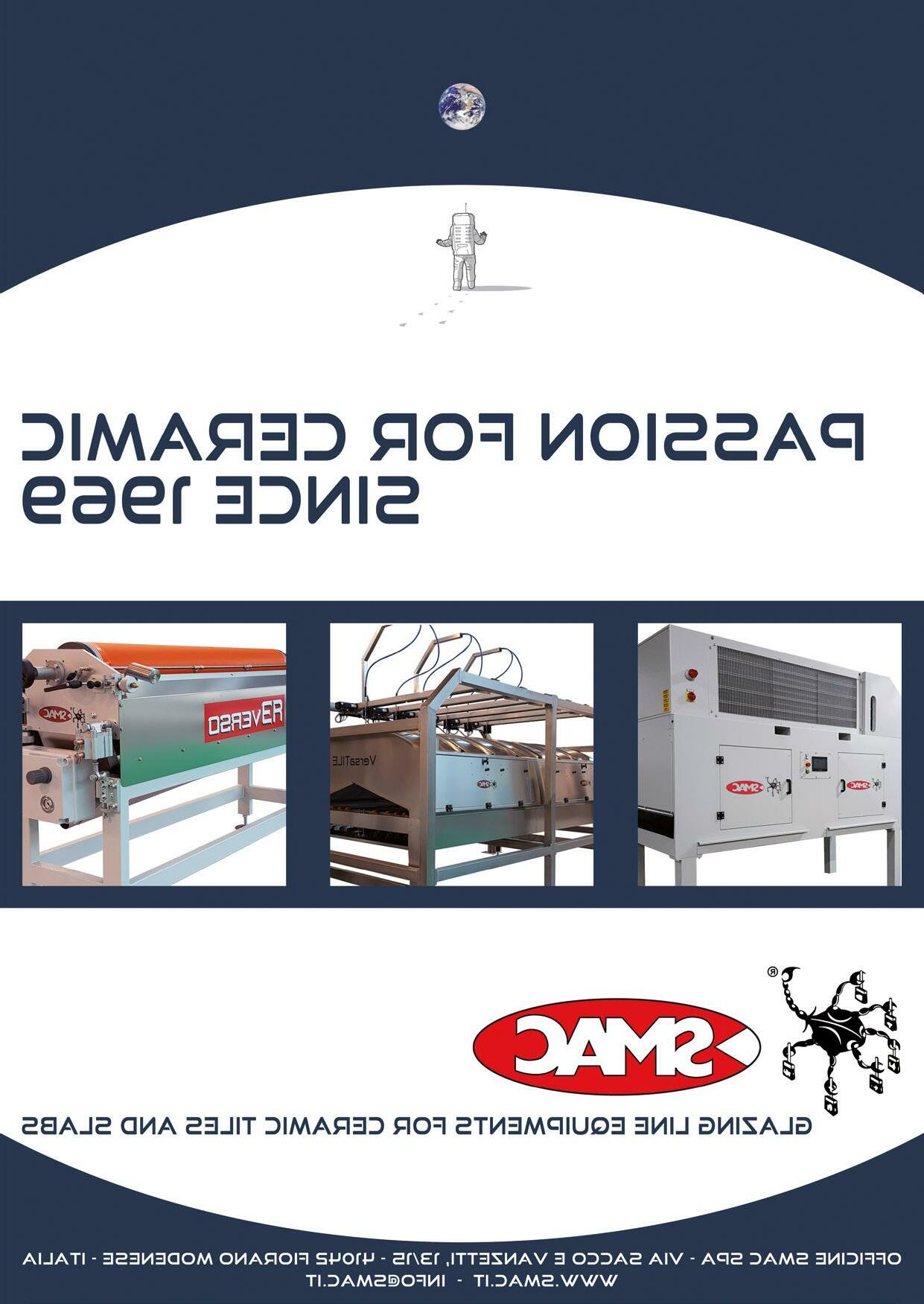



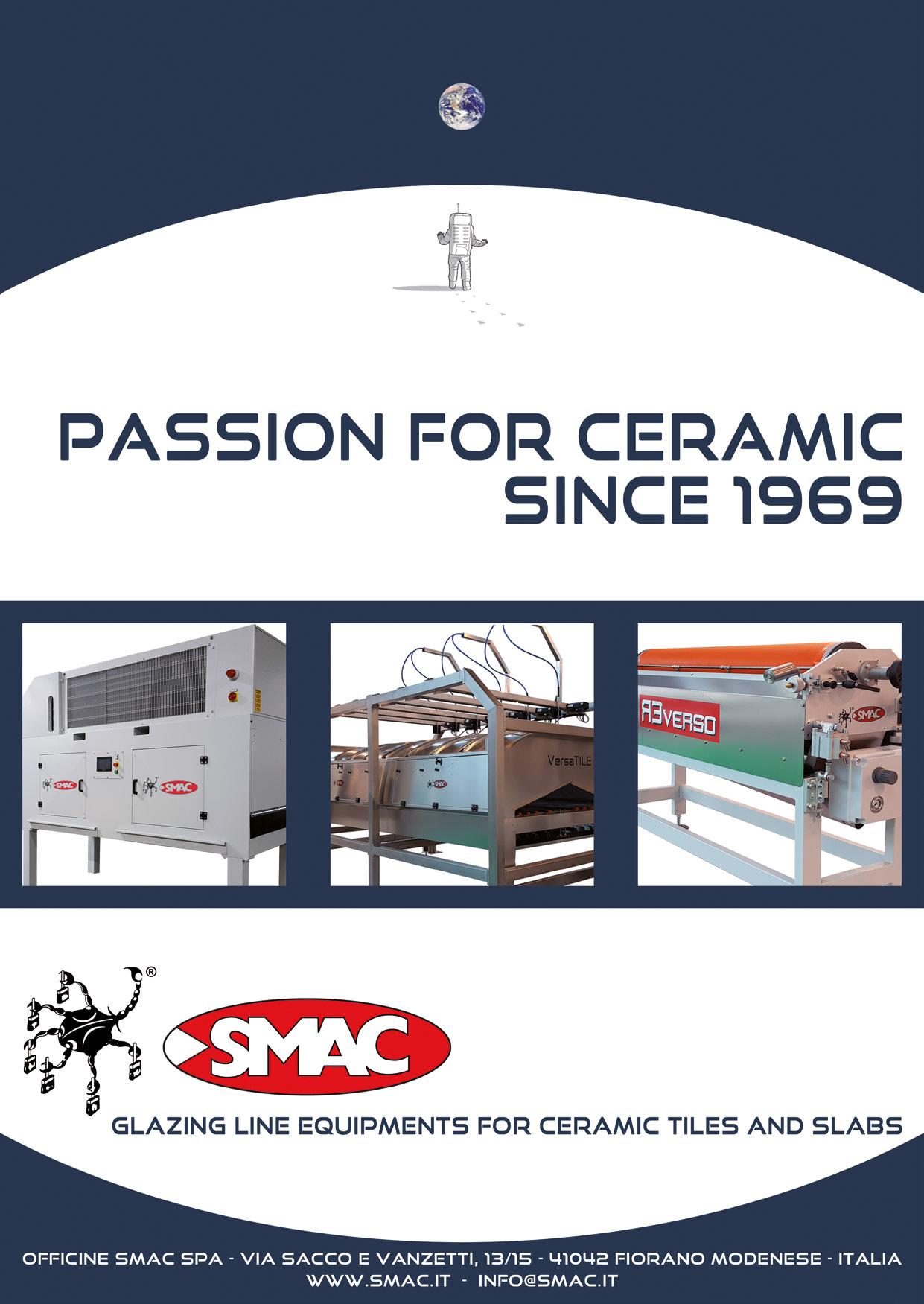




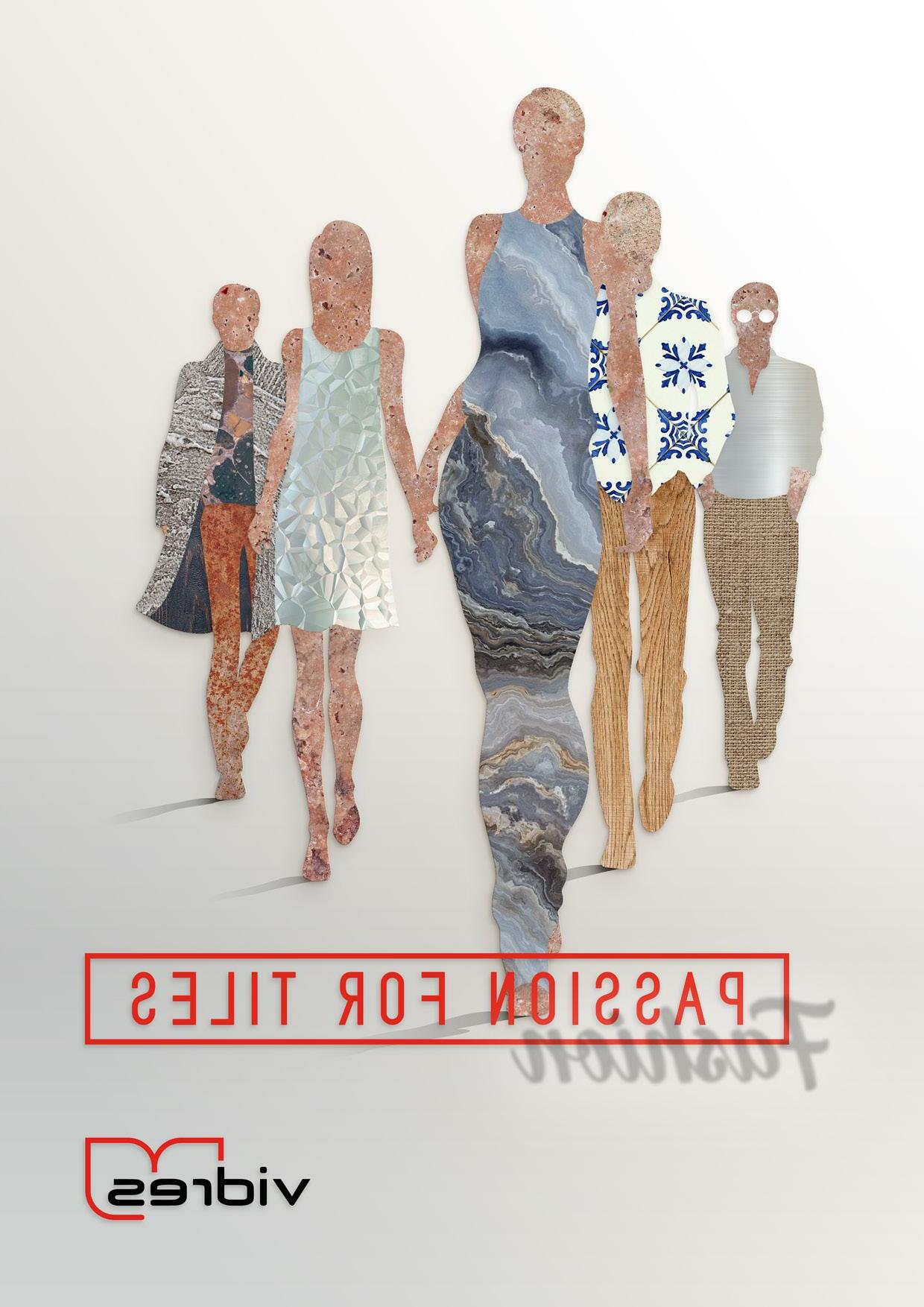



 by Paola Giacomini, Editor - p.giacomini@tiledizioni.it
by Paola Giacomini, Editor - p.giacomini@tiledizioni.it

Welcome to Indian Ceramics Asia 2023!
From 15 to 17 February, the Indian ceramic industry will meet again in Gandhinagar for the 17th annual edition of Indian Ceramics Asia and its concurrent show IBaRT, the India Brick and Roof Tile Expo.

The industry’s leading international suppliers will all be present, including the Italian machinery, equipment and material manufacturers Air Power, Appel, BMR, Bocedi, Cami, Cimes, Expert Lab, Interser, LB, Marpak, Mectiles, Metco, Minerali Industriali Engineering, Projecta Engineering, Sacmi, Setec, Smac, Surfaces Group, System Ceramics, Tecnocer Italia and Tecnoferrari, most of which will be exhibiting in the Italian pavilion organised by ACIMAC in cooperation with the Italian Trade Agency. Lamberti will also be present with its Indian company, while AKW, Imerys and Alteo will be among the exhibitors in the field of ceramic raw materials, and the IBaRT show can count on the presence of several well-known European suppliers, including Beralmar, De Boer, Equipceramic.

Indian Ceramics Asia provides a welcome opportunity to meet up with customers, most of whom are making substantial new investments aimed at increasing production capacity and productivity, but most of all aimed at reducing energy and production costs while increasing efficiency.
The Indian ceramic industry holds potential to become the largest producer in the world, as the industry is looking to almost double its turnover by 2024.
In the last couple of years, the Indian ceramic tile industry has further strengthened its position as a global tile player and as the world’s second largest manufacturer, consumer and exporter behind China. In 2021, India’s tile producers chalked up another astonishing success with total exports of 483 million sqm (up 19% on 2020), an achievement that has helped the industry recover more rapidly from the impact of the Covid-19 pandemic. To talk of “double-digit” growth is a significant understatement. When in 2014 India’s exports passed the 100 million square metre mark for the first time, it was the result of an 85% upturn, followed by increases of 31% in 2015, 39% in 2016, 23% in 2017, 20% in 2018, 31% in 2019 and 21% in 2020.
Exports also continued to grow in 2022. According to both Mr. Ashok Kajaria and Mr. Abhishek Somany (see their interviews in the following pages), in the Fiscal Year 2023 (ending on 31 march 2023) the value of Indian ceramic tile exports is expected to grow by between 35 and 45% on FY 2022, reaching approximately Euro 2.2 billion (approx. Rs.170 billion). X
CWR INDIA 2023 7
editorial Follow us also on Social Networks. Daily updates! Search “Ceramic World Web”
www.CeramicWorldWeb.com
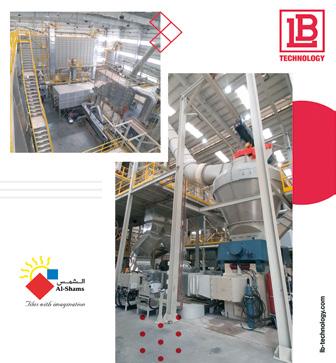

CWR INDIA 2023 8


world news CWR INDIA 2023 9
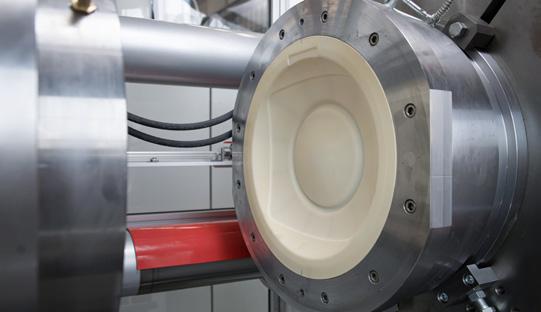
CWR INDIA 2023 10
Prayag Clay ProduCts adoPts high-CaPaCity teCnofiliere’s extrusion dies
Prayag Clay Products Limited, one of India’s top brick manufacturers located near the holy city of Varanasi, asked Tecnofiliere to design custom solutions capable of producing new sizes of interlocking lightweight blocks of varying heights and thicknesses and with high levels of energy efficiency. The project is part of the brick producer’s investment plan aimed at expanding, modernising and improving the efficiency of all its production lines in response to the growing demand for new structural clay solutions in the Indian market.

Tecnofiliere, a leading supplier of moulds and dies for the brick and tile industry, complied with the request and in collaboration with the client constructed and supplied a set of dies that will enable Prayag Clay Products Limited to manufacture and deliver to the market a variety of high quality clay blocks.
Tecnofiliere worked closely with Prayag’s technical team to deliver a solution that would ensure high levels of quality and productivity while meeting the factory’s specific handling requirements. For the first time, the customer opted for TFI model dies equipped with a tapered direct mounting plate with oversized cross-section capable of
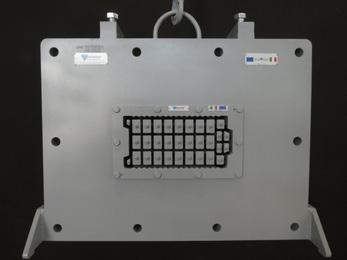
withstanding high pressures.
The internal braking system uses independently adjustable Hardox elements on each clay infeed section.
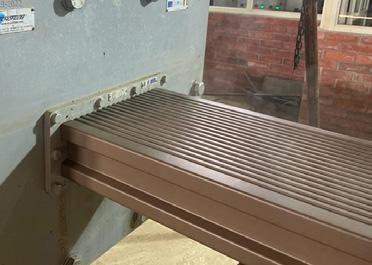
The Hardox core holder and special steel self-centring supports with anti-rotation system for the cores ensure high levels of stability and precision, avoiding variations in the thickness of the inner walls of the bricks which would result in cracks and other defects in the finished product.
The dies are also fitted with highly abrasion-resistant special metal cores and liners for durability and constant brick weight, as well as optimal flow and reduced energy consumption of the extruder.
90% of the dies were manufactured using electrical discharge machines to ensure a very high level of precision, while the core holders were fabricated using special welding robot platforms. To successfully complete the launch of the new product range, the order also included a new differential taper pressure head made of wear-resistant metal and equipped with all-round reinforcements.
For all its production requirements, Prayag Clay Products Limited will be able to make use of Tecnofiliere’s remote technical support system, which was expanded and improved during the pandemic and now provides an outstanding after-sales service.
world news CWR INDIA 2023 11
Tecna 2022 surpasses all expectations
Tecna 2022, the most important international exhibition of technology and supplies for the ceramic industry which ended in Rimini on 30 September, was a big success judging from the unanimous approval received from both exhibitors and visitors. The more than 320 brands present at the fair were delighted not only by the higher than expected attendance but also by the sheer quality of visitors present at the show. In particular, buyers included large numbers of owners and top managers from leading Italian and international ceramic companies who came to Rimini to get ideas for their upcoming investments and in turn were pleased to find innovative solutions to their latest needs.
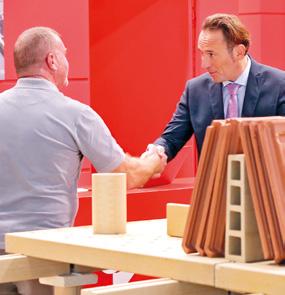
Despite the predictable absence of Chinese buyers, the level of international attendance remained high with 45% of visitors travelling in from more than 100 foreign countries
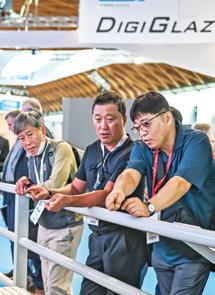
The best represented areas included Latin America, the Middle East, Europe, Southeast Asia (particularly India), the USA and Africa. A special programme for 130 selected top buyers organised with the support of the Italian Trade Agency ITA

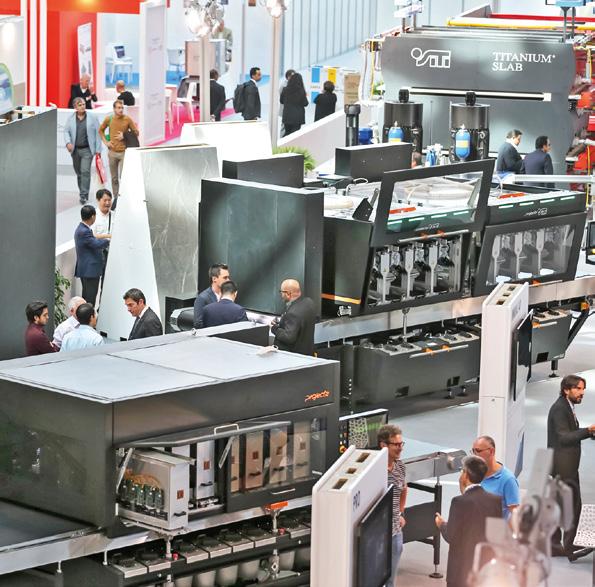
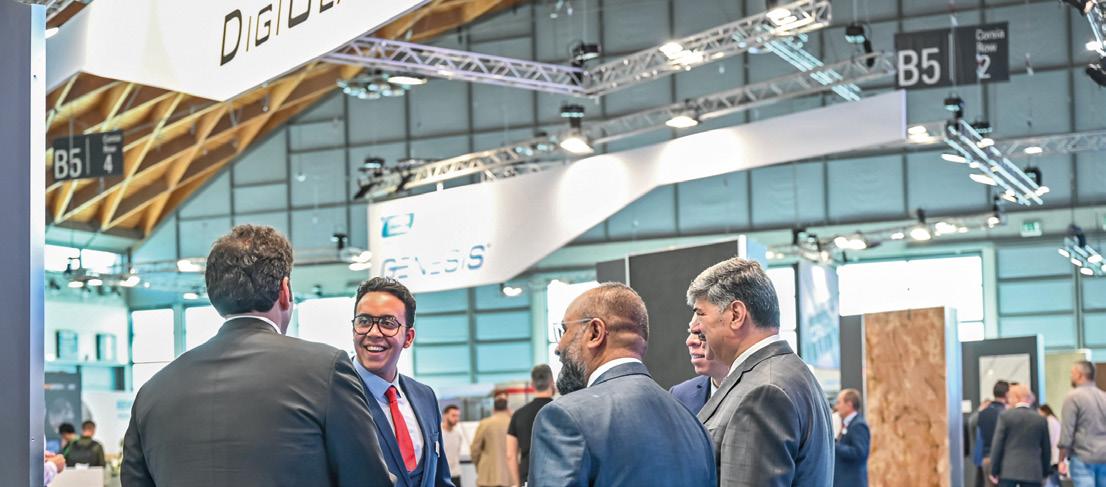
12
CWR INDIA 2023
VsDuk 2022 us lHkh mEehnksa dks ikj fd;k
featured more than 1,060 meetings with exhibiting companies, while a delegation of government investors and ceramic professionals from 11 sub-Saharan African countries was present at Tecna for the first time.

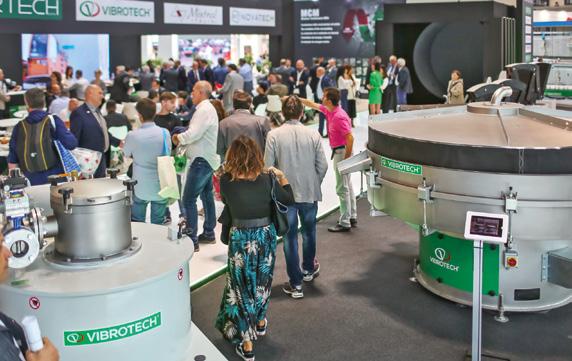
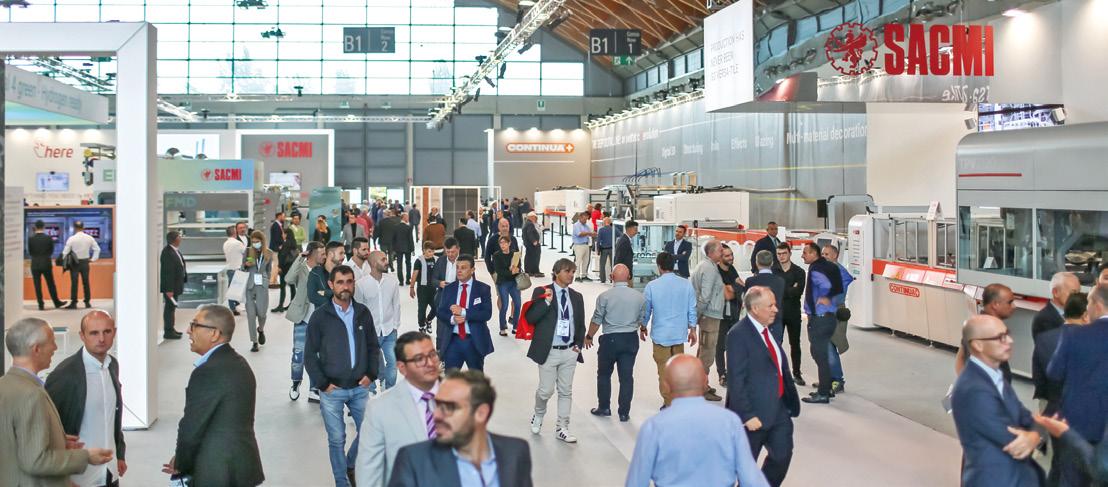
“Despite the difficult period we are experiencing, there is a strong sense of enthusiasm,” was how Acimac chairman Paolo Lamberti described the prevailing mood in the Rimini exhibition centre at the end of Tecna. “It was great to be back at the show after a four-year gap, and this opportunity to meet customers again and generate business makes us optimistic about the future. Our sector, and the Italian ceramic machinery industry in particular, once again demonstrated its vitality and spirit of innovation. Tecna has shown the market that we are ready to offer solutions to the key issues for the sector’s future, namely energy saving and efficiency, circular economy, just-in-time production and mass customisation, advanced logistics and big data. ”
These aspects were much in evidence both amongst the displayed products and at many of the events and conferences organised during the four days of the exhibition by Acimac (Italian Ceramic Machinery and Equipment Manufacturers’ Association) and IEG (Italian Exhibition Group). One of the highlights of the show was Tecna Future Lab, a new exhibition area catering for industry start-ups with a packed calendar of events devoted to digitalisation, green solutions, sustainability, logistics and artificial intelligence applied to industrial installations. The main aim of the initiative was to showcase the latest innovations and trends in the field of Industry 4.0, thereby carrying on the process of innovation undertaken by the manufacturing industry.
CWR INDIA 2023 13
Technological and product innovation, environmental sustainability, services, marketing, dimensional growth and production expansion were the main themes discussed at the international roundtable held during the inaugural conference “How to make the future: Visions and Challenges”.
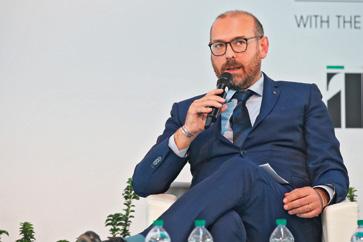
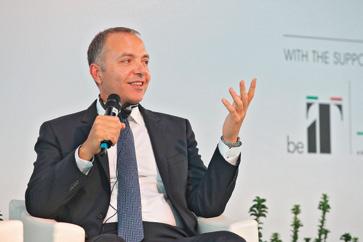
Following a thought-provoking report by Luca Baraldi (Chief Analyst at MECS/Acimac) on the global situation in the ceramic tile industry, its market and exports, five top managers from leading international ceramic groups discussed their visions, the initiatives they have adopted in response to the latest challenges, and the strategies they are pursuing to enable their companies to continue to develop in a rapidly changing world.
Rolando Lozano, General Manager at Grupo Lamosa Mexico (the world’s second largest tile manufacturer with production sites in Mexico, South America and Spain), discussed the group’s efforts to consolidate its growth following a series of expansions and acquisitions. This involves improving the efficiency of the production processes in order to standardise operations across the various plants while combining the now essential aspects of energy efficiency and sustainability with product innovation.
These concepts were further explored by Abdallah Massaad, CEO of RAK Ceramics (a multinational ceramic tile, sanitaryware and tableware producer with facilities in the United Arab Emirates, India and Bangladesh). During the current energy crisis it has become clearer than ever that cutting-edge process technologies can deliver the high levels of efficiency needed to improve competitiveness, he explained. As for medium- to longterm market positioning, it is extremely important to develop strong brands backed by companies with an adequate size and effective marketing activities.
This sentiment was echoed by Abhishek Somany, CEO of Somany Ceramics, India’s second largest ceramic producer and one of the “Best Brands of India”, a challenging position to preserve in a market of 1.4 billion people that can only be maintained through continuous industrial investments. In this connection, Somany announced that the company’s next step following its recent production expansion will be to enter the large
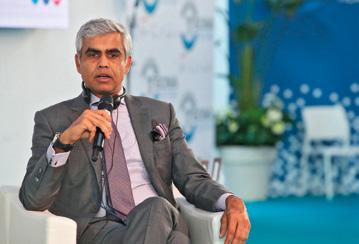
CWR INDIA 2023 14
Hkfo"; ds fy, D;k j.kuhfr;ka gSa\ lEesyu ds vkjaHk esa fljsfed m|ksx ds cM+s
Hkkxhnkjksa us vius fopkj çLrqr fd,
What are the strategies for the future?
The big players share their views
Abdallah Massaad
Abhishek Somany Luca Costi
slab segment, for which purpose it is planning to start up a Continua+ line in the second quarter of 2023. This comes against the backdrop of a market that offers Indian manufacturers excellent growth prospects in terms of both exports and domestic sales, while projections that some 250 million people will move to large cities in the next ten years are expected tos give a major boost to the construction industry.

Representing one of Italy’s best known companies and a major player in the US market with a local production facility “which offers a competitive advantage in the domestic market given the increased transport costs and delivery times for imports”, Luca Costi, CEO of Del Conca Group and Del Conca USA, discussed the concept of “service” as an increasingly important competitive lever in relations with the market. “Today customers are willing to pay a higher price for reliable delivery times, but to achieve these it is necessary to adopt advanced logistics based on Industry 4.0 technologies that allow for proper planning of all production activities through to delivery,” he said. Service is one of the four pillars of Del Conca’s strategy alongside product innovation, process efficiency and environmental sustainability, all of which played an important part in the recent investment in the Solignano plant.
Mike Newitt, Group Quality & Technical Manager at Brickworks Building Products (an Australian building materials giant and since 2018 one of the leading players in the US brick industry), also discussed environmental issues and outlined the group’s roadmap towards its goal of net zero carbon.
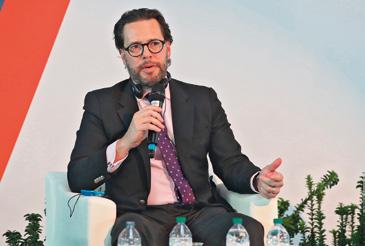
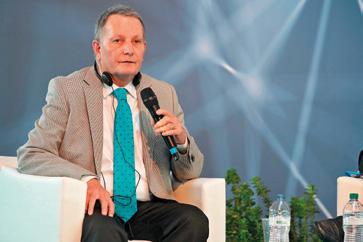

To conclude, Acimac’s Chairman Paolo Lamberti thanked the guests for their contributions. “Listening carefully to customers’ needs is vital if technology and service providers are to be able to organise their R&D activities effectively,” he said. “As we saw at Tecna, this constant commitment to process and product innovation has already produced excellent results and must be maintained in the future in order to offer fresh solutions to newly emerging needs.”
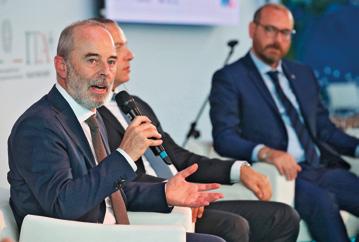
CWR INDIA 2023 15
Mike Newitt
Paolo Lamberti
WATCH THE TALKS GIVEN BY THE GUESTS AT THE ROUNDTABLE
Rolando Lozano
Kajaria Ceramics, India’s largest tile manufacturer and one of the top ten groups in the world, reported exceptional results in the fiscal year to 31 March 2022. Total sales in volume grew 21% year-on-year to 92 million sqm, while revenues were up 33% to Rs. 37.05 billion (approximately US $490 million). The excellent performance continued in the first quarter of the new fiscal year (ended 30 June) with 80% year-on-year revenue growth to Rs. 10.08 billion (around $133 million), representing the seventh straight quarter delivering double-digit revenue growth. EBITDA margin for the quarter remained stable at 15% despite escalating inflation across all inputs and rising gas costs.
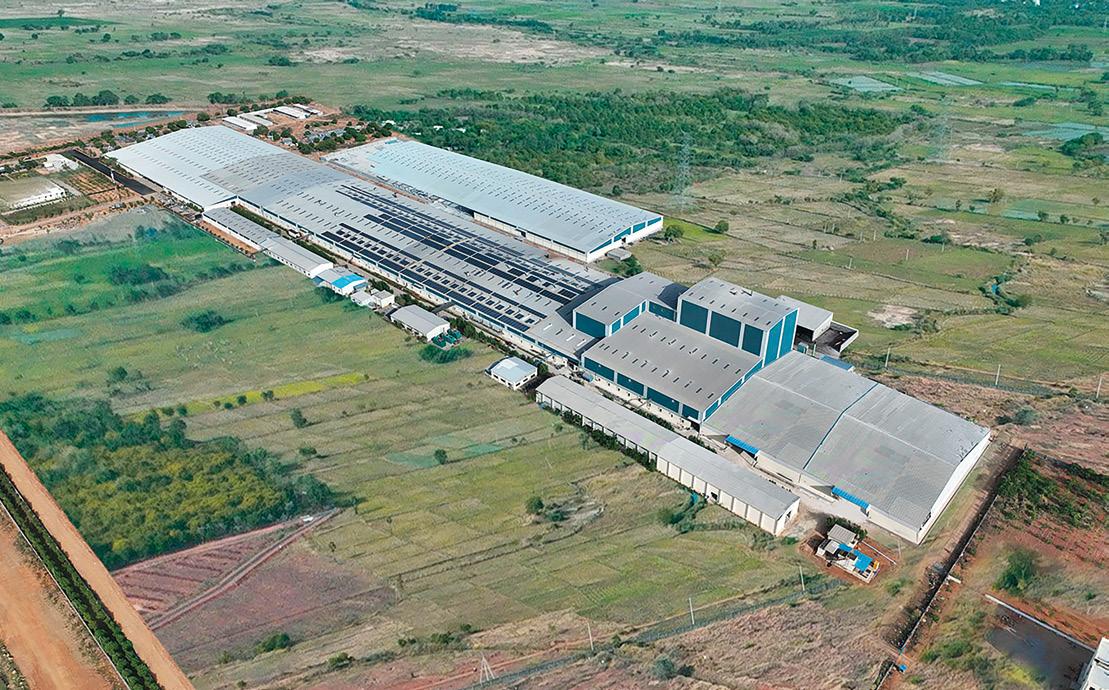
Moreover, the group continues to maintain its focus on the domestic market (exports account for just 2% of volumes).
We met chairman Ashok Kajaria to discuss the group’s performance and future projects. “We are highly satisfied with
Kajaria Ceramics accelerates its growth
Milena Bernardi - m.bernardi@tiledizioni.it
CWR INDIA 2023 16
The new plant in Andhra Pradesh (Srikalahasti) South India
dtkfj;k fljsfeDl us viuh o`f) dks rst fd;k
the performance we have delivered in FY22 and in Q1 FY23, which again demonstrated the power of sustainable business,” he said. “Against a backdrop of geopolitical volatility and high commodity prices, the company has posted its highest ever sales volume of 91.67 million sqm (growth of 22% YoY) and 33% growth in revenues to more than Rs. 37 billion (around $490 million) in the financial year ended 2022. We continue to believe that the business momentum is going to be very strong on the back of increased traction in real estate sector, rapid urbanisation, consumer preference shifts and increased application of tiles in replacement and renovation projects.”
CWR: As you announced a year ago, you have completed a US $33 million investment plan, increasing your capacity to 82.8 million sqm. Could you tell us more about it?
ASHOK KAJARIA: As we plan to grow at a rate of 15% plus volume growth for the next 3 years, we need to increase our capacity either organically or inorganically. To meet these growth targets, last year we completed three brownfield expansions with a total of 12.4 million sqm/year. At our Rajasthan (Gailpur) Plant, North India, we started up a line with a capacity of 4.2 million sqm of floor tiles; at the Andhra Pradesh (Sri Kalahasti) Plant, South India, we have commissioned a capacity of 3.8 million sqm of value-added glazed vitrified tiles; a further 4.4 million square metre capacity of polished porcelain stoneware was added at the Kajaria vitrified tiles plant in Gujarat (Morbi), West India. This year, we have acquired a 51% stake in South Asian Ceramics Pvt. Ltd. Telangana, South India, which has an annual production capacity of 4.79 million sqm of ceramic floor tiles, to further strengthen our base in South India. This will take our total capacity to 87.59 million sq.m.
CWR: What are your forecasts for the development of the ceramic industry in India?

A. KAJARIA: Today India is one of the fastest-growing ceramic tiles markets, especially for branded players. This momentum is likely to continue given the ongoing recovery of the real estate sector and increased spending on home and workspace beautification and appearance. We see accelerated traction not just from new projects but also from increased application of tiles in replacement and renovation projects. We remain optimistic about the future and expect the next financial year to be another strong year for our company.
CWR: Where do you see the biggest challenges?
interview
Talking to... Ashok Kajaria here with his sons Chetan (right) and Rishi (left)
CWR INDIA 2023 17
A. KAJARIA: The biggest challenge that the ceramic industry is facing at the moment is the increase in gas prices and the fact that the sector is unable to pass the higher cost on to end users. Back in July and August 2021, the energy crisis began which caused supply shortages and huge spikes in fuel costs. This was followed by a surge in paper prices and freight costs and then the disruption due to current inflationary challenges resulting from the geopolitical tensions in the Russia-Ukraine region. However, despite these headwinds we have managed to keep our business on track and continued to build confidence with our customers. Though the rising gas prices and commodity cost inflation pose a near term pressure on operating margins, our price hikes will partially mitigate these cost pressures.
CWR: Although you are not an export-oriented company, what is your assessment of Indian industry’s growth in foreign markets?
A. KAJARIA: In the current scenario, Indian tile exports look very promising. We expect total exports to grow by between 33% and 40% this year to almost Rs. 170 billion (more than $2 billion). The export market has really opened up as India manufactures high-grade tiles using the latest technology and has the lowest cost of production amongst all the exporting countries. The pandemic and the resultant global supply chain disruption opened up new markets for Indian tile manufacturers, particularly the USA and the EU. This also helped to compensate for losses caused by the imposition of anti-dumping duty by the Gulf Corporation Council (GCC). CWR: You said you are optimistic. What are your expectations for the current year?
A. KAJARIA: Kajaria Ceramics is capable, scalable and sustainable and is well positioned to face challenges and leverage opportunities. We will continue to explore ways to further improve our top line growth and profitability by capitalising on the favourable situations we have in our growing market. 5
Kajaria Ceramics in figures
Kajaria Ceramics has a tile production capacity of 82.8 million sqm/year, consisting of 32.3 million sqm of ceramic tiles produced in2 factoriesinRajasthan, NorthIndiaandAndhraPradesh, South India 24.2 million sqm of polished vitrified tiles produced in 2 factories in Gujarat , West India and Rajasthan, North India and 26.3 million sqm of glazed vitrified tiles produced in 3 facilities in in Rajasthan & Uttar Pradesh, North India, and Andhra Pradesh (South India). Kajaria Ceramics distributes its products throughout India via a network of more than 1,700 dealers.

CWR INDIA 2023 18
interview
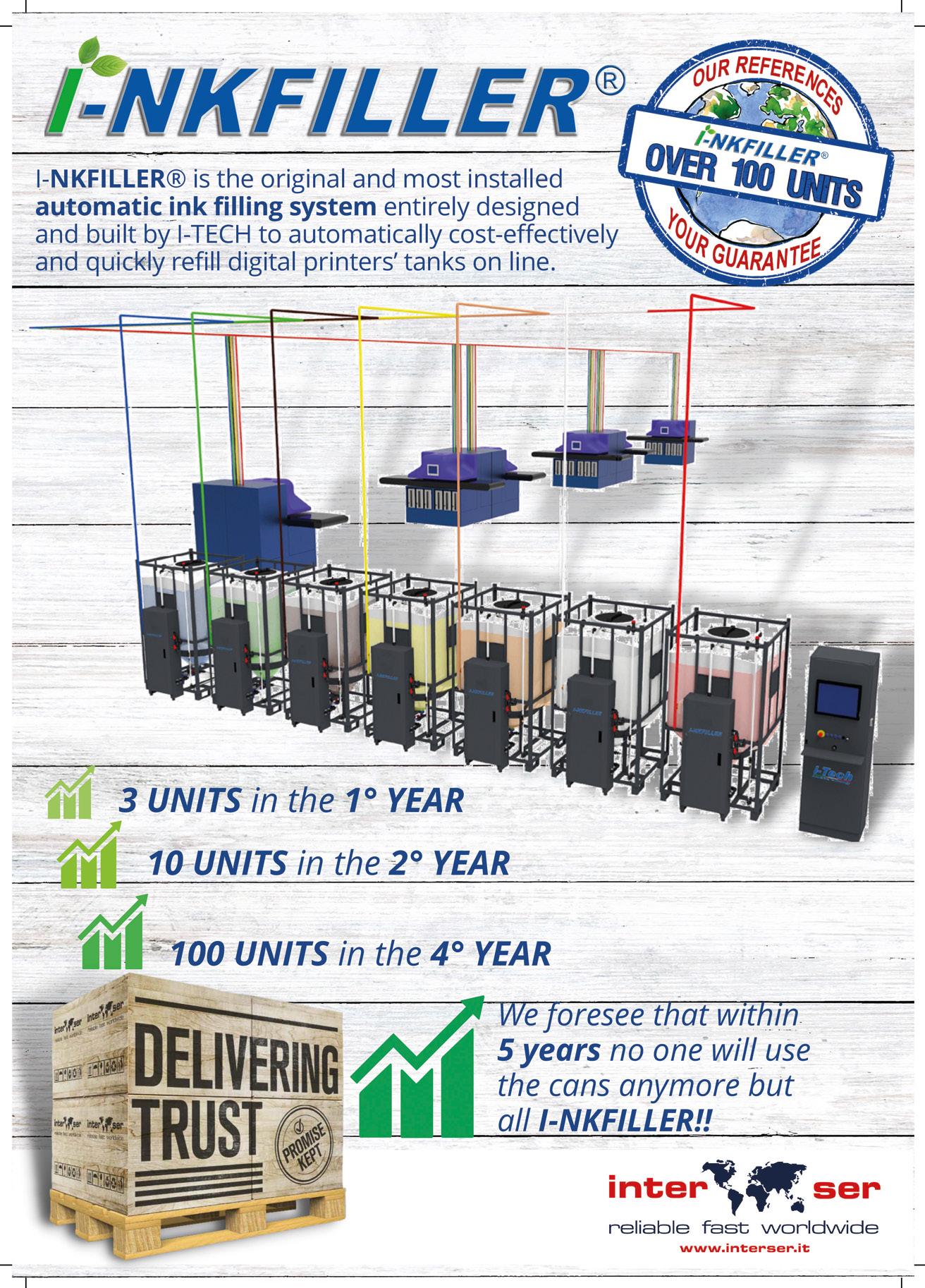
'kkunkj o`f) ds fy, rS;kj lksekuh
Milena Bernardi - m.bernardi@tiledizioni.it
Somany Ceramics is currently in a capacity expansion mode. In May this year, the Indian Group completed the most important capacity expansion project in its recent history. The three new lines increased the group’s access to annual production capacity from 63 to 74 million sqm, strengthening its position as India’s second largest manufacturer and a top global player. As Managing Director & CEO Abhishek Somany explains, “This expansion was essential to maintain the leadership position in the market and enhance the overall brand saliency”.
In the fiscal year ended in March 2022, the company’s total revenues (including 10% generated in the bathroom segment) grew by 27% on the previous year to Rs. 20.6 billion (approx. US $272 million), with EBIDTA margins of 9.9%.

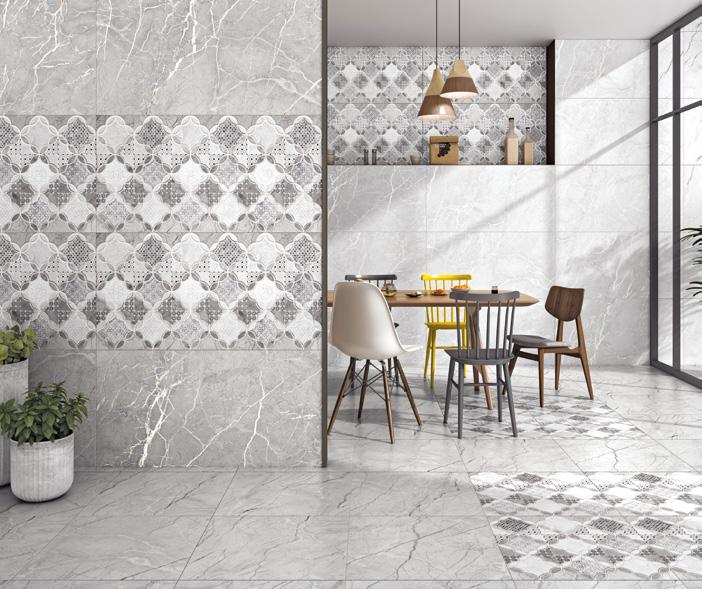
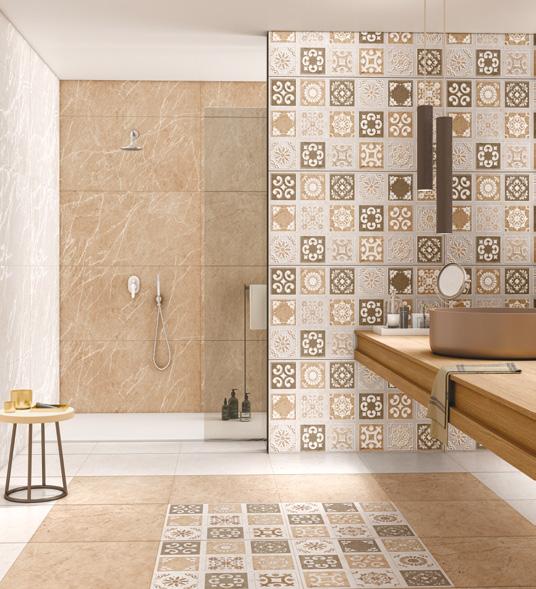
The positive results were mainly due to the good trend in sales spread over the financial year. The construction market in India is buoyant and the company is targeting a growth of 30-35% in this financial year.
We spoke to CEO Abhishek Somany and to Amit Bhatnagar , Head of International Business & Strategy.
CWR INDIA 2023 20
Somany Ceramics set for strong growth fljsfeDl
CWR: Six months on, what is the situation today?
ABHISHEK SOMANY: The Indian economy has fully returned to pre-pandemic levels. Inflationary pressures are present, but India is perfectly positioned to lead the industry into the next decade. The government has also played an important role through schemes aimed at making the overall business environment more investment friendly. One of these is the PLI Production Linked Incentive scheme, a five-year multi-billion dollar programme to boost the growth of the country’s industry in both domestic and export-oriented sectors. In the light of this, I am convinced that India has the potential to become the world’s largest ceramic tile exporter over the next decade.
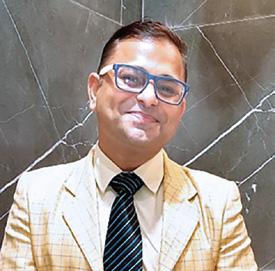
CWR: And how is Somany Ceramics performing?
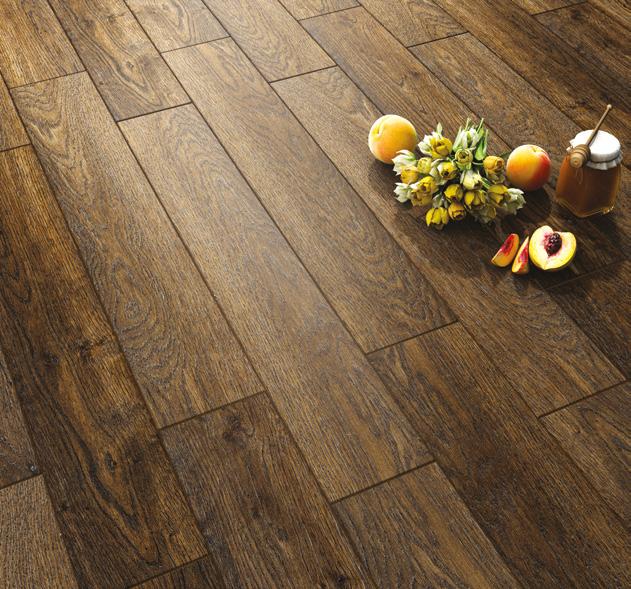
A. SOMANY: Somany Ceramics’ growth has been robust despite starting out from a low base. Going forward, India and the rest of the world will see a slowdown caused by geopolitical conflicts, although we are still confident of achieving a strong double-digit growth in the coming year. An important contribution will come from the capacity expansions we have completed in recent months, with approximately 20% capacity added to our existing three plants located in the north, south and west of the country (about 4 million sqm/year each). This expansion is for the production of various product types, from ceramic tiles to glazed vitrified tiles and technical porcelain tiles. In total, we now have an installed capacity of approximately 74 million sqm/year.
CWR: What do you see as the biggest challenge?
A. SOMANY: The extreme volatility of natural gas prices – which in India have doubled in a year – and the consequent increase in all input costs, particularly raw materials, a problem common to the entire ceramic industry.
CWR: What are the forecasts for the construction industry in India?
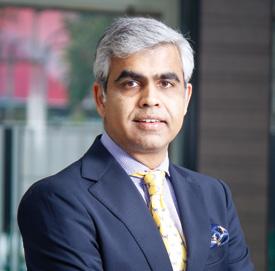
CWR INDIA 2023 21
interview
Talking to, from left... Abhishek Somany and Amit Bhatnagar
A. SOMANY: The residential and commercial construction sector has finally emerged from a decade of recession, and the sector is now seeing enormous growth across the country and is likely to continue at these levels for the foreseeable future. This is mainly due to government initiatives such as Housing for All and Clean India (Swachh Bharat) and the huge investments in highway construction which facilitates the development of new urban centres.
CWR: Let’s talk about the astonishing growth of Indian tile exports.
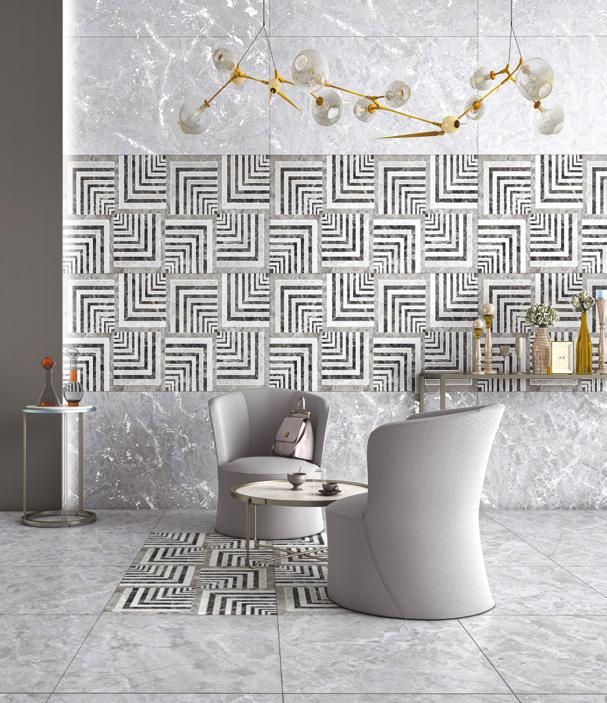
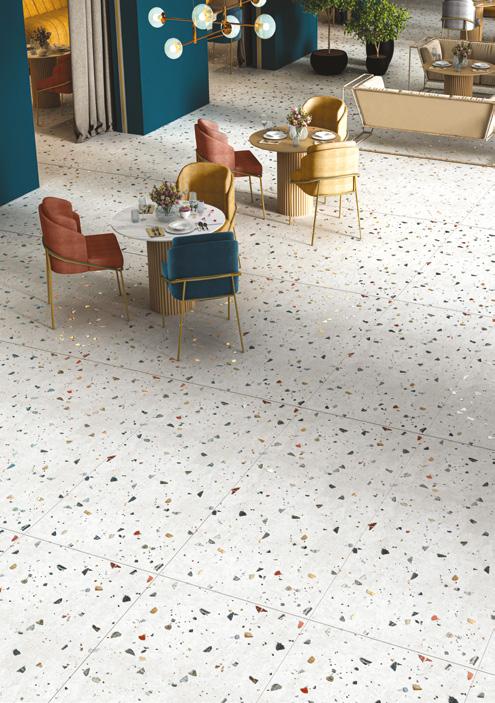
AMIT BHATNAGAR: Things are quite positive this year compared to last year’s difficulties caused by the availability and cost of sea freight. As a result, we expect India’s tile exports to grow by 45% in fiscal year 2022-2023 to approximately €2.2 billion. Freight costs to some destinations in Latin America and Europe are still quite high, but may decrease due to weaker global demand, which would make it easier to achieve the above-mentioned targets.
CWR: Where are Somany Ceramics’ main export markets?
A. BHATNAGAR: We currently have a presence in 70 countries, mostly in Europe, Africa and the Middle East, with an export share of 4-5% of total turnover. We are growing steadily in foreign markets by leveraging product quality and global brand strength and have a very different strategy and vision compared to the unorganized Morbi segment. We aim to continue this growth by leveraging the same values that have guided our evolution in the Indian market over more than 50 years: quality, product innovation, reliability and the strength of one of the “Best Brands of India”, values that we pass on to our international clientele and which have enabled us to build rock-solid partnerships with our customers. ✕
CWR INDIA 2023 22
Somany Ceramics installs the Sacmi Continua+ technology in its Somany Max facility

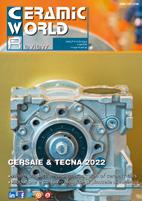


Somany Ceramics has big ambitions for the manufacture of large, high-end slabs, a project which the company is realizing in partnership with Sacmi. A brand new Sacmi line is now on its way to the new Gujarat production plant, one of ten located across the country, which will be known as Somany Max Pvt. Ltd. The Sacmi line is made up of high-speed PCR2000s, a 58.8-meter ECP285 horizontal dryer and a 260.4-meter HTE (Hydrogen ready high thermal efficiency) FCC295 kiln. What’s more, the dryer has been designed to operate on zero fuel thanks to systems that retrieve and recycle heat from the kiln. The start-up is expected to be completed by the summer.
Somany Max is a name that highlights the company’s efforts to position itself prominently in the high-added-value segment. Somany’s management team, headed by Managing Director and CEO Abhishek Somany , is keen to make it one of the world’s leading quality ceramics, a goal that’s being pursued via both higher net access to capacity (now 74 million sq.m) and investment in new products, sizes and manufacturing technologies.


More specifically, the Somany Max project draws on Sacmi’s experience with Continua+ solutions in India (over a dozen have been installed in recent years). These plants have clearly demonstrated an ability to combine high quality and performance with unmatched speed and fuel efficiency, a crucial competitiveness factor on this market. This first investment in Continua+ by Somany thus brings the benefits of that experience and further strengthens the long-standing alliance between Somany and Sacmi.
Another pivotal element of the customer’s strategy is steady growth within Indian and overseas markets, built on quality, reliability, product innovation, and brand strength/recognition. That goal is now within reach thanks to the latest products that will be leaving the Somany Max factory by the end of the summer, from the 80x160 cm and 80x240 cm slabs to the large, thick worktops measuring 80x320 cm, with productivity expected to be around 4 million square meters per year ✕
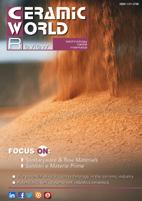
❱
CWR INDIA 2023 23 interview
FOR 30 YEARS THE MOST INFLUENTIAL INTERNATIONAL MAGAZINES FOR THE CERAMIC INDUSTRY & DESIGN PROFESSIONAL
The sustainable future of ceramic body preparation
LB HYBRID is a brand new ceramic body preparation solution designed to optimise production costs through energy savings while ensuring the highest levels of environmental sustainability. Successfully launched for the first time at Tecna 2022 in Rimini, this technology has been judged by many operators one of the most interesting technological innovations on show at the fair. This patented technology combines dry and wet milling and guarantees maximum plant flexibility by adapting to any manufacturer’s needs. In this new process, the powder obtained from dry milling is homogenised together with the wet milled slip to create a microgranulate suitable for pressing.
The microgranulation process occurs by means of nucleation and accretion of dry ground powder when slip is injected into the granulator using dedicated nozzles. Specific powder/slip proportions are maintained and care is taken to ensure that the parts have the same composition. Granulation takes place inside the new HGT (Hybrid Granulation Technology) continuous microgranulator. The microgranulate is subsequently returned to a moisture content suitable for pressing.
❱ Characteristics and advantages
LB Hybrid technology allows production area usage to be optimised as it occupies less space than traditional systems.
24
CWR INDIA 2023
ATM TEST 1 TEST 2 TEST 3 TEST 4 Powder range with standard technology Greater flowability when: Moisture content of powders (%) 6.6 6.6 9.5 6.7 6.8 4-8 Irrelevant PD (g/cm3) 0.928 1.015 1.043 1.006 1.039 0.92-1.05 See HR TD (g/ cm3) 1.062 1.191 1.211 1.179 1.225 1.03-1.13 See HR HR (1) Hausner ratio 1.14 1.17 1.16 1.17 1.18 1.07-1.17 HR low (<1.25) Excellent if <1.15 ARS (°) Static angle of repose 25.5 27.2 26.8 28.3 26.5 30-35 ARS low (<45°) Excellent if <30° ARD (°) Dynamic angle of repose 46.6 49.0 56.5 46.9 50.0 40-45 ARD low Bulk Flow FdM (8 mm. g/s ∙ cm2) 13.0 15.6 16.4 15.3 15.8 13-16 FdM high
TAB. 1: COMPARISON BETWEEN MICROGRANULATED POWDERS LB HYBRID AND STANDARD
TECHNOLOGY
(IN COLLABORATION WITH ISTEC FAENZA)
LB Group (Fiorano, Italy)
fljsfed bdkà cukus dk LFkk;h Hkfo";
Industrial tests have shown that microgranulate obtained with LB Hybrid technology has the following characteristics:
• particles with equivalent levels of flowability to the powder from standard technology;
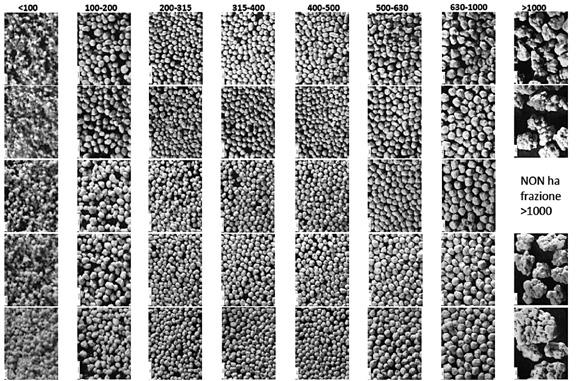
• possibility of producing tiles of any size and thickness using any shaping technology currently available on the market;
• finished porcelain stoneware products that comply with standards;
• controlled particle size curve;
• ceramic tiles with excellent surface quality.
The tile surface obtained with microgranulate produced using LB HYBRID technology showed excellent characteristics and is compatible with all decoration systems. The LB HYBRID microgranulate has similar technological characteristics to powder from standard technology (Table 1).
Compared to a traditional body preparation process, LB HYBRID technology saves up to 65% thermal energy and up to 70% water and reduces atmospheric emissions by up to 65% . Taking as an example an annual production of 5,000,000 m2 of 10 mm thick tiles, LB HYBRID reduces CO2 emissions by 6,000,000 kg/year and allows for water savings of 30,000,000 litres/year, assuming an average tile moisture content of 10.5% and a slip moisture content of 32%. ✕

technology CWR INDIA 2023 25
FIG. 2 - COMPARISON BETWEEN SURFACES OBTAINED BY COMPACTING (AT INCREASING SPECIFIC PRESSURES) POWDERS MICROGRANULATED WITH HYBRID TECHNOLOGY AND POWDERS GRANULATED WITH STANDARD TECHNOLOGY
ATM ATM TEST 3 TEST 3 TEST 2 TEST 2 TEST 1 TEST 1 TEST 4 TEST 4
FIG. 1 - MORPHOLOGICAL COMPARISON BETWEEN MICROGRANULES PRODUCED WITH LB HYBRID TECHNOLOGY AND GRANULES PRODUCED WITH STANDARD TECHNOLOGY
Slabs and sub-sizes: high flexibility and a productivity of 21,500 sqm/day
The revolutionary PCR2180 is the global benchmark for the production of slabs and sub-sizes, and delivers the lowest levels of specific consumption in its category along with 160% higher productivity.
It has been designed to handle slabs and sub-sizes with variable lengths and thicknesses ranging from 3 to 20 mm (30 mm on the PCR3000). The most important new feature on this model is the belt width, which allows it to produce fired slabs as wide as 1,800 mm while maintaining higher output rates. The result is a sharp increase in overall productivity, up to 21,500 sqm per day.
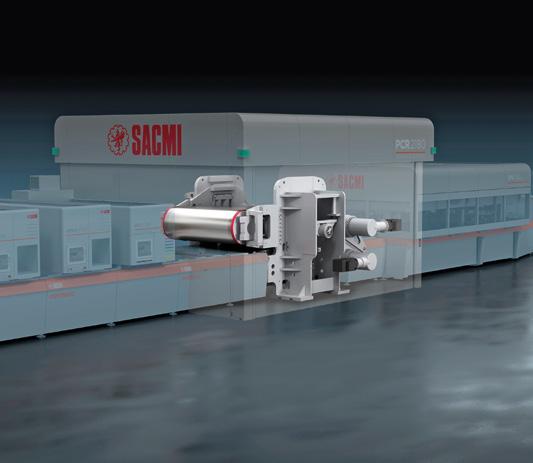
❱ How slabs have evolved
Ceramic manufacturers have two closely-related needs in terms of finished products. The first is to be able to produce high-end slabs in increasingly large and innovative sizes, while the second is to maximise productivity and versatility in the production of sub-sizes and to allow for customised, justin-time production.
The PCR2180 offers a solution to both these requirements. With regard to productivity, 1800 mm is equivalent to three 600x600 mm exits (and their corresponding modular sizes 600x1200 mm, 600x900 mm, 300x600 mm, etc.). For this reason, along with the higher speeds in terms of m/s, this Continua+ model can offer a system-wide response to the need
CWR 140/2021 26
INDIA 2023
PCR2180
LySCl vkSj mi&vkdkj % mPp yphykiu vkSj 21500 oxZehVj çfrfnu dh mRikndrk
Gianluca Pederzini, Andrea Bresciani, Sacmi (Imola, Italy)
to efficiently manage an increasingly diversified product mix that transcends the traditional distinction between slabs and conventional sizes.
❱ Waste-free versatility
At least fifteen years have gone by since the pioneering days when ceramic slabs were considered a niche product. During this period, Sacmi has invested heavily in technology for maximising production efficiency, developing a system that allows scrap to be kept below 3% regardless of product size. This latest version of Continua+ not only produces a very limited amount of scrap but is also capable of recycling it directly on the line, thereby entirely eliminating process waste. Another advantage of the PCR2180 is its low consumption levels. Despite its higher productivity, it has the lowest levels of specific consumption in its category (0.05 kWh per square metre) against a modest increase in installed power. As for sustainability, this latest model is designed to operate with just 200 litres of hydraulic oil, 90% less than the quantity needed on a discontinuous press.
❱ Maximum flexibility in terms of raw materials and bodies

Raw materials and bodies are a complex subject and vary enormously according to customers, geographical areas and markets. Nonetheless, the ceramic industry is showing growing interest in solutions capable of using different types of bodies and raw materials, especially those available lo-

CWR 140/2021 27
On-the-fly cutting technology CWR INDIA 2023
Precomposition
cally. The aim is not only to improve sustainability but also simply to ensure continuity of production, as witnessed in 2020 by the sharp contraction in supplies caused by international travel restrictions. This issue has also become central to Sacmi’s research efforts aimed at making the Continua+ family as versatile as possible in terms of different types of bodies and raw materials.
As for process quality, the key technological parameter to be taken into account is the density of the compacted material, which must be similar to that obtained with static pressing. In terms of figures, this means about 400 kg/cm².

The ceramic bodies used by manufacturers in different geographical regions may of course vary considerably in terms of cost, quality and product type. This is why Continua+ is designed to handle bodies for large slabs (which generally require high plasticity) as well as leaner bodies typically used for producing medium to small sizes by cutting the slabs immediately after compaction. In both cases, the products retain optimal mechanical strength.
❱ Automation and setup
One of the features of the Continua+ 2180 is the option of motorised size changeover, which marks yet another step towards just-in-time ceramic production as part of a make-to-order approach. On both motorised and manual control versions, the operator can easily set the size without wasting time and resources. Most importantly, the line does not lose efficiency in the case of size changeovers in terms of either speed or scrap rates, which never exceed 3% in any production scenario.
❱ Interconnected and digital
In developing the new Continua+ model, Sacmi has reasserted its plant engineering expertise with a focus on digital process and flow control. Natively integrated with the HERE Sacmi plant supervisor, Continua+ is designed to be part of an Industry 4.0 ceramic plant, operating in synchronicity with the downstream glazing and digital decoration department and the upstream powder and raw material preparation plants. This brings two main advantages. The first is the ability to constantly monitor quality, costs and performance, the second the capability to create on-surface and through-body decorations as early as the compaction stage through controlled deposition of spraydried powders. Thanks to the supervisor and the in-line inspection systems, these tasks can be synchronised with all downstream glazing and digital decoration stages, giving manufacturers the opportunity to create products with unprecedented aesthetic qualities in terms of the depth and three-dimensionality of the decoration. 5
CWR 140/2021 28 INDIA 2023 technology
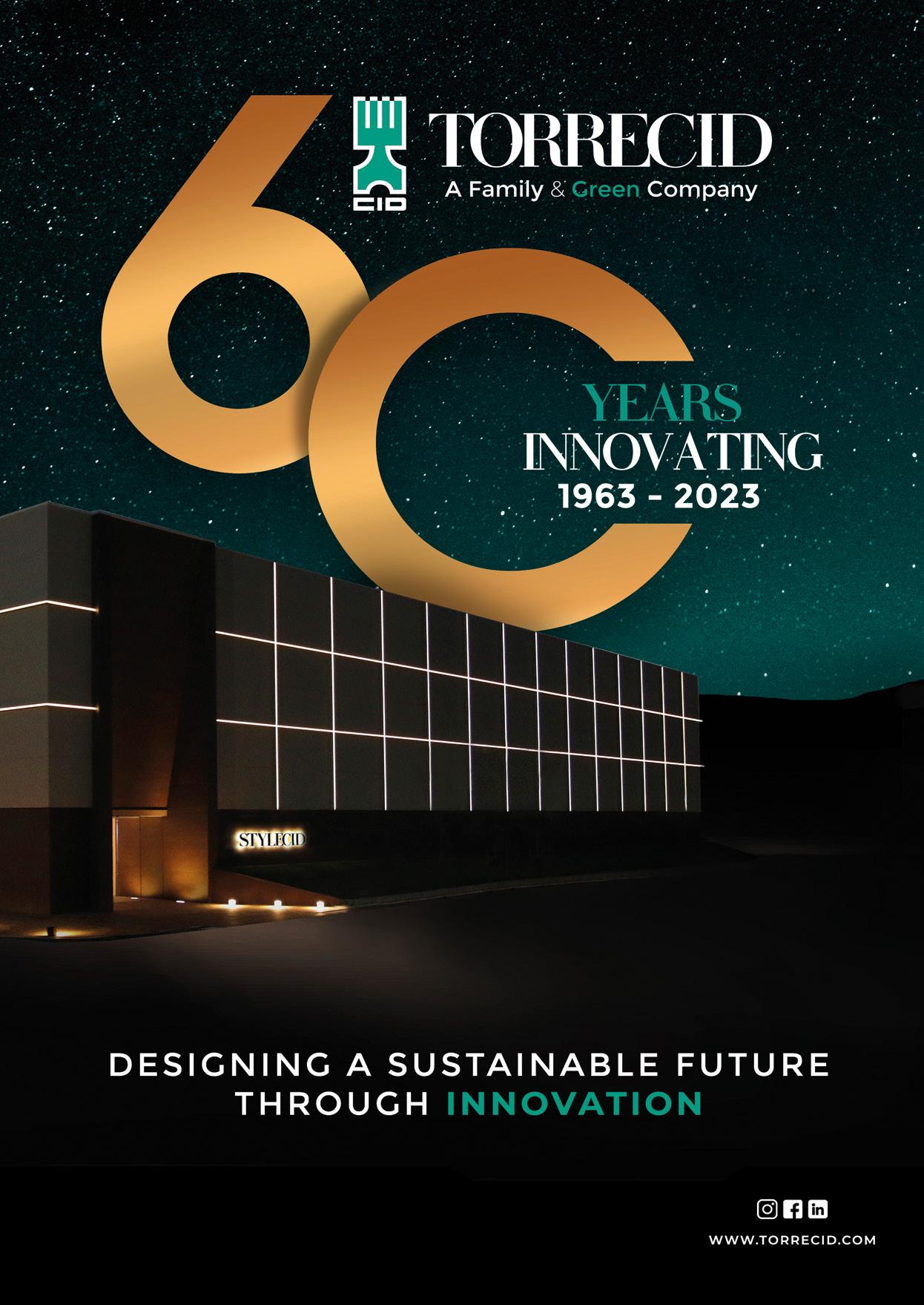
Sustainability as driver of change in the industry

Esmalglass-Itaca is driving change in the industry by focusing strongly on sustainability and promoting innovations that deliver added value and environmental benefits. Years of R&D efforts combined with the experience acquired working alongside customers who perform industrial-level digital glazing demonstrate the dedication and commitment of a company that places all its research results and technology at the service of the ceramic industry.
Esmalglass-Itaca’s sustainability commitment focuses on water, an essential building block of life that we cannot afford to waste. This led to the innovative new solution called DigitalGlass
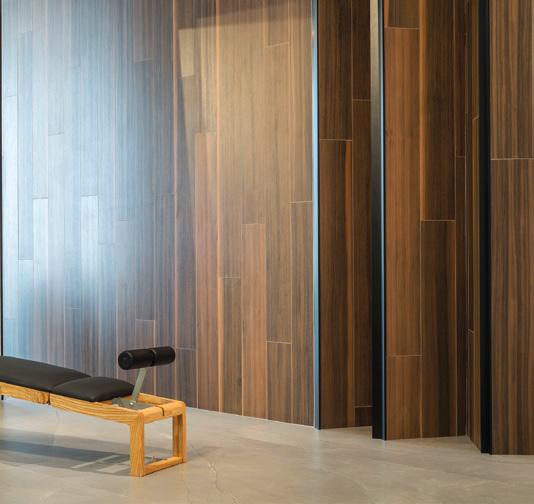
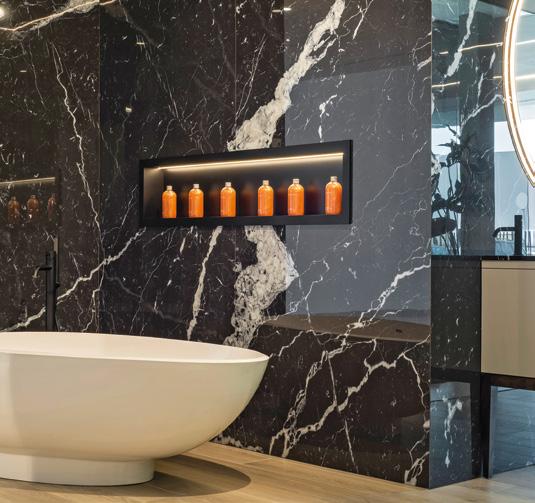
This new water-based glazing solution is the result of a fully digital process capable of reducing water consumption as much as tenfold compared to traditional applications, as well as cutting emissions and consequently lowering the environmental impact of the ceramic production process. As the culmination of Esmalglass-Itaca’s longstanding commitment to water saving, DigitalGlass is more than just a new technology, it is a transformative process for the entire ceramic industry. Research has demonstrated that the use of water-based glazes not only reduces the environmental impact of the production process, but also leads to lower operating and logistics costs, a substantial improvement in product quality and aesthetics, and a significant reduction in product industrialisation time.
DigitalGlass eliminates waste in the glazing process, eliminates odours, improves surface quality, allows for digital reliefs, and
CWR INDIA 2023 30
Esmalglass-Itaca Group (Spain)
m|ksx esa ifjorZu ds pkyd ds :i esa fLFkjrk
ensures greater flexibility in terms of the finishes that can be achieved. This innovative solution also brings significant economic benefits for the ceramic industry as it allows for the reuse of excess material, it optimises material storage and it reduces personnel costs through more efficient control of the production process. These competitive advantages are also guaranteed by the certifications obtained from all the leading printhead manufacturers attesting to the quality of Esmalglass-Itaca’s water-based digital materials.
Esmalglass-Itaca presents a solution where water, sustainability and technology form a perfect combination to create new opportunities and advantages for customers, while protecting the environment worldwide. This commitment and philosophy allow Esmalglass-Itaca to stand out as a reference brand for its R&D activity, products and service at international level, always keeping in mind that a sustainable future is possible. 5



CWR INDIA 2023 31 technology
Exploring the potential of three-dimensional ceramic surfaces
For the ceramic industry to go beyond existing standards and explore new synergies and opportunities, it will need critical capacity, vision and analysis, with technological evolution set to play a vital role in the process.
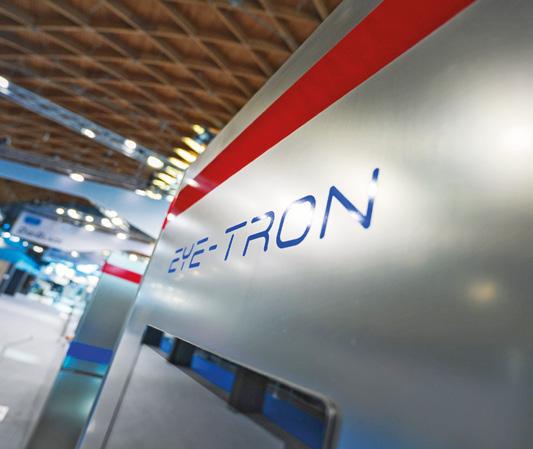
Drawing on more than 50 years of experience, Coesia Group member company System Ceramics has focused its research efforts on increasing the versatility and usability of ceramic products and entering new sectors such as furniture and design. This has led to the development of Genesis, a solution that originates from traditional ceramic materials but evolves towards the segment of worktops, kitchen countertops and other furnishing applications where a three-dimensional effect is required.
The most unique aspects of Genesis are its fully digital management and its extremely versatile and integrable concept, enabling it to meet the technical requirements of today’s slab production while guaranteeing unlimited aesthetic potential. Ideally sized for small installation spaces, Genesis integrates perfectly with the Superfast press and can be considered a kind of hybrid solution midway between a pressing device and a digital printer.
Genesis features a three-dimensional full-body decoration system with digital control of coloured spray-dried powder discharge (wet or dry coloured or speckled mixtures) at specific points on the slab according to the chosen graphic design. Its operation is based on the high-performance powder printhead, which has no moving parts and guarantees a high degree of reliability and a rapid response.
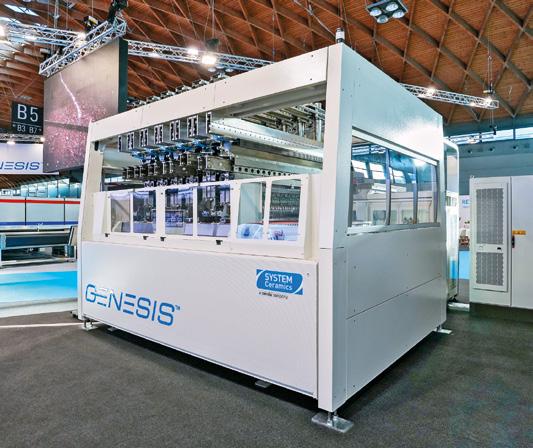
32
CWR INDIA 2023
f=ferh; fljsfed lrgksa dh {kerk dks igpkuuk
System Ceramics (Fiorano Modenese, Italy)
Genesis is installed at the infeed to the press belt, so it acts inside the thickness of the ceramic body as it is formed. Thanks to digital management of the application process, it is able to create effects that reproduce the aesthetics of high-end materials such as marble and natural stone while achieving enhanced overall design and superior technical qualities. These standards are achieved thanks to the high degree of synchronisation with the decoration systems and consequently with the digitally applied graphic designs. This is a result of the perfect integration with the Creadigit Infinity digital printer, itself equipped with the advanced Creavision e-view system, and with the new Eye-tron which communicates with the printer in real time to allow for perfect synchronisation between the surface designs and the full-body effects.
With this solution, System Ceramics has once again developed cutting-edge technology that enhances the aesthetics and commercial potential of ceramic surfaces for furnishing applications.

The development of Genesis also involved a major geodesign operation in collaboration with Tosilab, a design hub specialising in trend analysis.
To enable the world’s leading ceramic brands to enter a market with highly competitive products, System Ceramics has invested time and resources in analysing natural materials, their geological characteristics and the evolutionary processes that determine their veins and textures.
This preliminary investigation has enabled System Ceramics to present Genesis as a complete and effective technology that meets the needs of companies wishing to explore the three-dimensionality of ceramics and above all tap into its enormous commercial potential. ✕
33
CWR INDIA 2023 technology
Dry grinding powder recycling

In recent years, sustainability has become a major goal for all industrial sectors as part of their efforts to develop a circular economy capable of optimising productivity while carefully controlling and recovering energy and raw materials. In a B2B market, the companies that pay the most attention to green issues are also the ones that are the most attractive to customers, who are increasingly aware of the greater competitiveness that environmental sustainability can bring to their businesses.
BMR has embraced this philosophy for years now and stands as a beacon of green development, well aware of the impact a company can have on both the business world and society. Its vision is focused on Sustainability-Oriented Innovation (SOI), which combines aspects of product, process and business management to generate social and environmental value above and beyond any immediate economic benefits. The increase in demand for ceramic product customisation, the growing complexity and ever shorter life cycle of products, and the need for small batches coupled with the uncertainty of an unstable economy are all factors that have fuelled development strategies focused on maximising line flexibility while maintaining and if possible improving production efficiency and quality and adopting tools that do not contain polluting elements or components that may cause problems during disposal or reuse. In this scenario, BMR is pursuing a new vision of the ceramic end-of-line process in which environmental sustainability gradually becomes an integral feature of the production plant alongside efficiency and automation.
❱ Productivity and sustainability
BMR first introduced its Dry technology more than a decade ago, well in advance of the general trend towards environ-
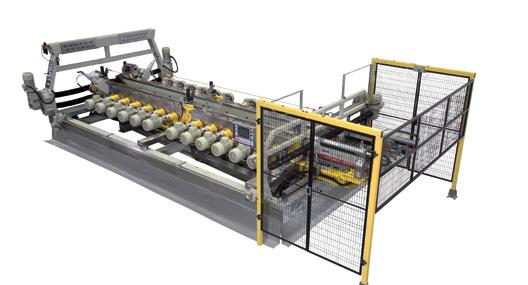
34
Squadra Squadra Dry
'kq"d xzkbaÇMx ikmMj dk iqupZØ.k
Marco Sichi, BMR (Scandiano, Italy)
CWR INDIA 2023
mental awareness, and gradually adopted it on all treatment, scoring-and-snapping and squaring machines. The launch of Squadra Dry at Tecnargilla 2010 marked the beginning of a radical shift towards an eco-friendly philosophy that would revolutionise the world of ceramic machinery and allow for water, energy and economic savings. In addition, the ceramic companies that have installed a Squadra Dry at their end of their lines (504 units have been installed to date) have reported a better organised and healthier workplace and consequently a marked improvement in their employees’ working conditions.
During that period, BMR not only made significant investments in technology but also sought scientific backing for its development activities by teaming up with the University of Modena and Reggio Emilia. The experiments conducted in 2017 in collaboration with the Department of Chemical and Geological Sciences showed that it was possible to recover large quantities of dry grinding residues and recycle them as raw materials in the body formulation. This revolutionary result for the ceramic industry was reached after more than six months of industrial experimentation that involved analysing both the powders and the residues left by the tools installed on the machines. The following is a summary of the experiments and the results obtained.

❱ Scientific powder analysis and body tests
The dry grinding process required the grinding wheel composition to be optimised in order to dissipate the heat generated by friction between the grinding wheel and the tile. In this study, BMR and the University of Modena and Reggio have demonstrated scientifically that the powders can be recovered and are effectively equivalent to high-quality chamotte. The experiment used five squaring powders originating from five different production plants, together with the respective grinding wheels. The aim was to analyse the powders and identify potential contaminants.
After verifying the mineralogical nature of the powders, which were found to consist exclusively of quartz, albite (sodium feldspar) and mullite, the next step was to analyse the powders by means of X-Ray Fluorescence XRF (Table 2). The grinding wheels were likewise analysed using XRF to obtain the main compositional data. Although the materials used vary from one grinding wheel to another, in general the main elements pres-
35
USING TOP SQUADRA DRY No. of opposing spindles 12+12 Grinding wheel diameter mm 300 - 345 Diamond width mm 12 - 30 Spindle speed r.p.m. 2800 - 3500 Peripheral speed m/s 42 Removable thickness from each side of tile mm 5 - 12 Feed rate m/min. 8 - 25 Quantity removed by diamond wheel mm 0.5 - 2 Quantity removed by resinoid wheel mm 0.2 - 0.5 Production of recyclable dry powder kg/h 200 - 400 technology CWR INDIA 2023
TAB. 1 - RECYCLABLE DRY POWDER RECOVERED FROM MACHINING OF PORCELAIN TILE
ent are cobalt, copper, iron, nickel and sometimes tin and silicon. These elements were searched for as trace components in the powders in order to determine the degree of release associated with grinding wheel wear (Table 3). These results clearly demonstrate that only very small quantities of contaminants are released to the powders from the grinding wheels. Along with zirconium and zinc, which are constituent elements of the bodies, the content of potentially chromophore (colouring) elements has a maximum level of 0.06% (chromium in body sample N), but normally oscillates around values of below 0.01%%. The only contaminant found in significant quantities was iron, which is certainly present in higher quantities than in the respective initial bodies (as high as 1.1-1.2%, Table 2). The particle size distribution was found to be fairly homogeneous, suggesting that there would be no difficulty in mixing the powders with the other raw materials. The small particle size compensates for the intrinsic hardness of the fired materials (Table 4). Body tests were then performed in partnership with a major Italian industrial group, first in the laboratory and subsequently in industrial production.
The philosophy involved investigating the potential for adding original squaring powder to the body, but to determine just how far this approach could be taken it was decided to produce a special “rustic” type body that would be capable of accommodating large quantities of wet waste and squaring powder (although naturally at the expense of fired colour). The results of the laboratory tests are summed up in the image shown in Fig. 1, obtained from cylindrical test pieces fired in an industrial kiln with heat work of around 1135°C (Bullers Rings). Tests involving the introduction of dry squaring powder directly into the mill have shown that it is possible to add up to 5% with only small losses in the colorimetric L value. Instead, by using waste of various kinds in the factory together with 20% dry squaring powder it is possible to produce an excellent porcelain body with the same values of water absorption, a small increase in firing shrinkage and a decrease in the colorimetric L value of around 5-7 points (Table 5).
Sample SiO2 Al2O3 CaO MgO Na2O K2O TiO2 Fe2O3 A 72.12 18.76 0.95 0.38 3.02 2.79 0.61 1.23 C 69.88 21.75 0.62 0.76 3.97 1.84 0.44 0.54 N 72.38 18.37 0.89 0.37 3.35 2.84 0.69 0.92 I 73.64 17.03 1.30 0.38 3.18 2.61 0.60 1.11 S 70.65 19.29 0.86 0.60 4.46 2.21 0.66 1.12
Sample Ni Co Cr Zn Cu Zr Sn Pb A 57 108 224 410 100 1793 45 52 C 18 20 226 45 129 328 42 24 N 71 67 560 481 79 1876 - 129 I 75 65 264 359 76 3229 35 96 S 34 13 100 601 92 2670 418 52
Body < 5 µm % < 10 µm % < 50 µm % < 63 µm % < 100 µm % A 30 49 92 96 98 C 20 31 88 95 99 N 32 53 97 99 100 I 29 49 98 99 100 S 28 45 95 98 100 36 CWR 147/2022 technology INDIA 2023
TAB. 2 - XRF QUANTITATIVE CHEMICAL ANALYSIS: CERAMIC ELEMENT IN THE POWDERS
TAB. 3 - XRF QUANTITATIVE CHEMICAL ANALYSIS: TRACE ELEMENTS (PPM) [100 ppm = 0.01%]
TAB. 4 - PARTICLE SIZE DISTRIBUTION OF POWDERS
The right colour for every solution



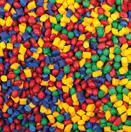


GLASS PLASTIC ROOFS&BRICKS CERAMICS PAINT&COATINGS COLOUR INNOVATION INDUSTRY INCO INDUSTRIA COLORI SPA • Via Montebonello, 19/21 • 41026 Pavullo nel Frignano (MODENA) Italy • www.incolours.it
Following six months of industrial production trials, it was established that:
• large and ever increasing quantities of powders can be used;
• the use of dry squaring powder is without doubt less problematical than that of sludge deriving from wet post-firing mechanical treatments;

• the powders can be used in quantities of at least up to 4-5% of the body without creating technological problems;

• tile surface issues were not observed;
• these powders are not suitable for the production of super-white bodies (although it may be possible to use powders originating exclusively from the squaring of super-white products);
• in “rustic” or specially prepared bodies, the addition of large quantities of powders (25%) causes only a limited reduction in the colorimetric L value (from 77 to around 70), a small increase in shrinkage and potential shade variation, although this naturally depends on the material the squaring powders were obtained from.
The results of the experiments carried out in collaboration with the University of Modena and Reggio Emilia have confirmed the validity of a process innovation that over the past five years has enabled manufacturers to manage the entire manufacturing process with unprecedented flexibility and zero waste. The majority of ceramic companies using Squadra Dry have already adopted this approach, which allows raw materials to be recycled as part of a circular production process that reduces costs as well as energy consumption.
BMR’s R&D department has continued to focus on energy consumption, for example by adopting single inverters for calibrator motors to reduce energy and tool consumption during machining. All the machines have undergone technological upgrades and digital enhancement with the aim of improving processing efficiency and reducing consumption. For example, the automatic squaring machine equipped with cameras is capable of continuously determining the thickness of the grinding wheel to within a tenth of a millimetre. This brings a significant improvement in terms of sustainability and resource optimisation as the tool is used to its full potential over its entire lifetime, resulting in zero waste.
FIG. 1: Results of body tests
A. Standard sodium feldspar
B. Squaring powder
C. Body obtained with standard sodium feldspar
D. Special body obtained with 20% powder + unfired waste
❱ Results
✕
Shrinkage % Water absorption L a b Squaring powder “as is” 12-15 <0.1 Normal production body 6.4 0.05 77 25 10 Special body obtained with 20% powder + unfired waste 6.7 <0.1 70 1 8
TAB. 5 - APPEARANCE OF TEST PIECES AND VALUES OF SHRINKAGE, WATER ABSORPTION AND COLORIMETRIC PARAMETERS
38 technology CWR INDIA 2023 A B C D
Data flows, technology remains INTO THE FUTURE
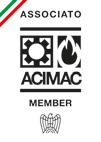
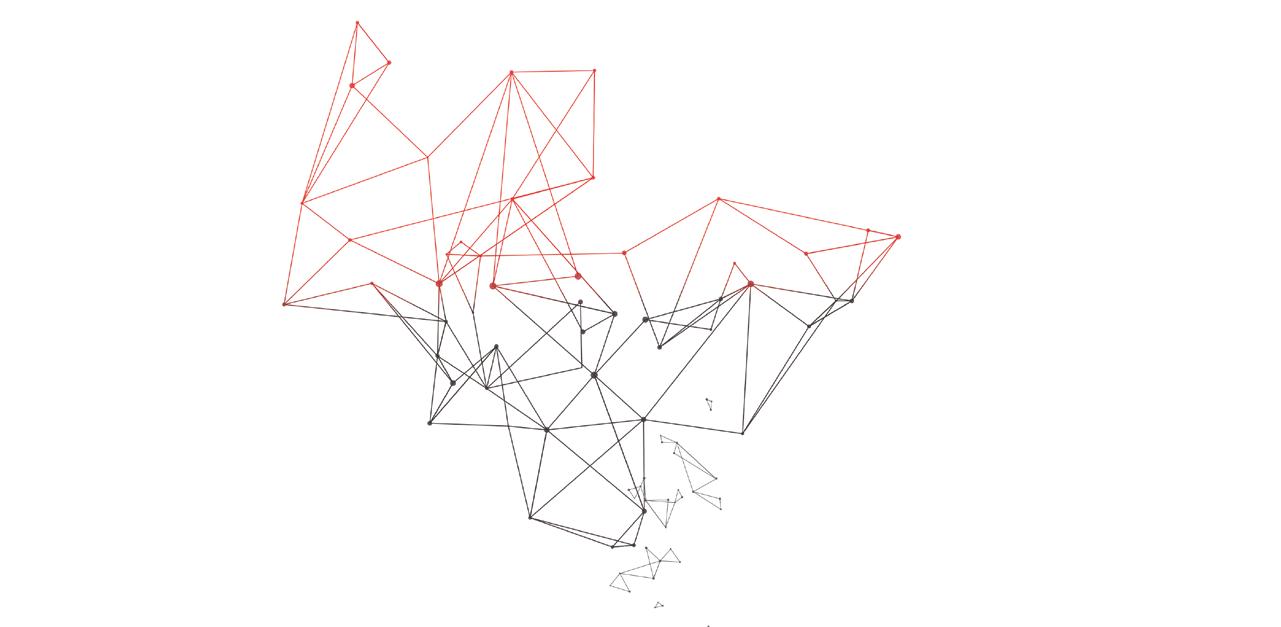

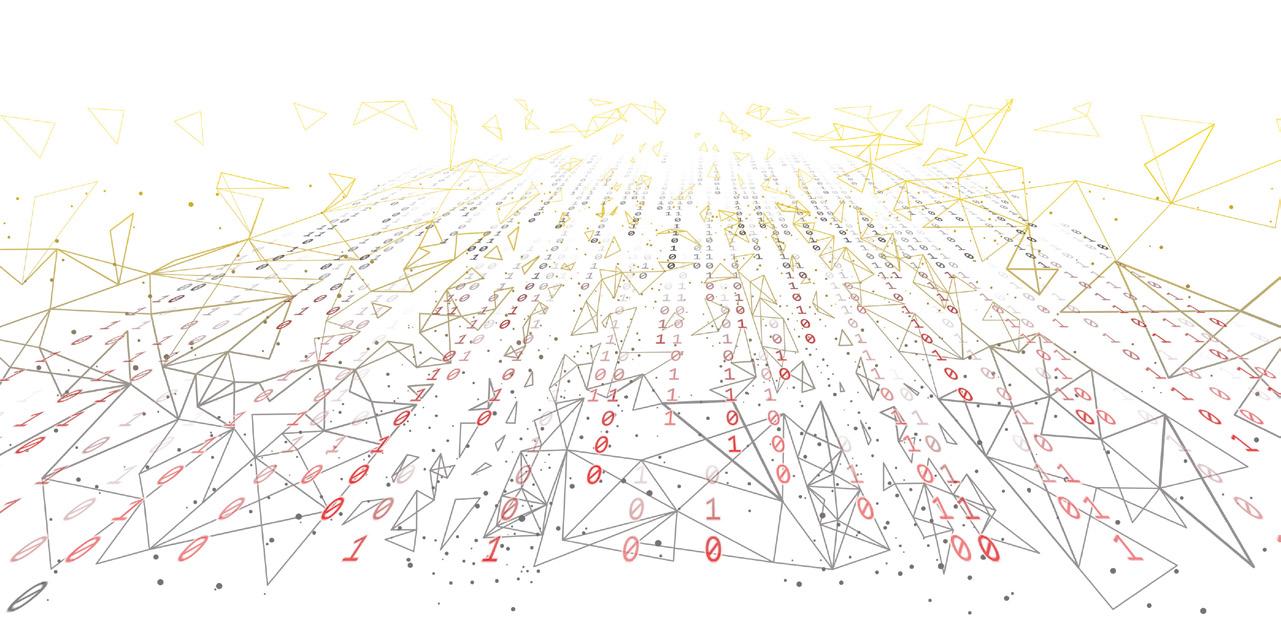
www.bmr.it
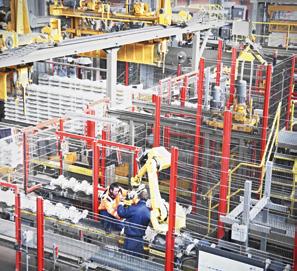


ADVERTORIAL

ADVERTORIAL www.lingl.com
Hubert Schug
Greater productivity in high-pressure casting
As part of their efforts to boost output volumes and improve production quality, sanitaryware producers are increasingly adopting high-pressure casting (HPC) technology together with modern plants capable of continuous 24/7 production. The aim of all companies in the sector is to optimise the potential of their casting departments by performing the maximum number of cycles per day with the highest quality. The characteristics of the slip, and in particular the casting rate, play a crucial role in achieving this goal.
The research conducted in Lamberti’s laboratories has led to the development of the Reolam series of products designed to improve slip casting rates, reduce casting times and consequently increase productivity.

❱ Reolam CS 383
The series includes various types of Reolam designed to adapt to the formulations of the various slips. Reolam CS 383 has proved to be the most popular product and is suitable for most production activities.
Reolam CS 383 is a water-soluble polymer-based casting rate accelerator. Its function is to promote aggregation of the finest particles of ceramic slips, thereby speeding up the flow of water from the slip to the resin mould. The main result is to accelerate the casting rate, thereby reducing the casting time and increasing the number of castings per day.

42
CWR INDIA 2023
Lamberti (Gallarate, Italy)
mPp ncko dkÇLVx esa T;knk mRikndrk
The main advantages of Reolam CS 383 are the following:
• a substantial increase in casting rate without any significant increase in water content after casting;
• better moisture uniformity in the formed body;
• more uniform density in drain casting areas;
• greater consistency of slip parameters;
• reduction in cracks during shrinkage;
• longer mould working life due to agglomeration of the finest particles of the slip;

• excellent control of slip rheology.
Reolam CS 383 is also useful in the traditional casting process (with plaster moulds), especially when the slip contains large quantities of very fine particles. Even without increasing the number of castings per day, the reduction in casting time allows for an improvement in production quality, leaving more time for the demoulding and fettling operations and for the drying of the plaster moulds between two cycles.
Reolam CS 383 is readily dispersible and is normally added to slow stirring tanks (also in heated tanks).
Reolam CS 383 is suitable not only for sanitaryware production but also for casting tableware and technical ceramics and for filter-pressing any kind of ceramic slip. 5
1
3
turn-key solutions for the treatment of
metallic ores
1 Geological survey
3 Laboratory test
3 Industrial test
4 Layout & engineering
5 Turn-key solution
6 Customer care A COMPANY OF THE GROUP www mineraliengineering it www mineraliindustriali it
PHASE 6 PHASE
PHASE 2 PHASE
PHASE 4 PHASE 5 Dedicated
non
PHASE
PHASE
PHASE
PHASE
PHASE
PHASE
sanitaryware
ADVERTISING
Low-energy drying of sanitaryware and tableware
The recent dramatic increases in natural gas prices have made it more urgent than ever to drastically reduce the energy consumption of thermal machines in ceramic manufacturing processes. The Setec Group has long been one of the leading innovators in the industry and in recent years has focused on a number of energy-saving solutions. Thanks to European co-funding through the Life programme, it has developed new formulations for sanitaryware with a low firing temperature (Life Sanitser project) and a new generation of low energy consumption shuttle and tunnel kilns (Life Economick project) The latest Life project involving Setec from June 2020 is Life Rapid Dry, which focuses on energy saving in the sanitaryware and tableware drying process. The project has two goals: construction of a low energy consumption dryer (described in this article) and optimisation of sanitaryware bodies by introducing recycled materials (the subject of a future article).

CWR 146/2022 44
Antonio Fortuna, Domenico Massimo Fortuna, Setec (Civita Castellana, Italy)
lsfuVjhos;j vkSj Vscyos;j dks de&ÅtkZ ij lq[kkuk CWR INDIA 2023
❱ The drying process
Drying is an extremely important production stage that involves removing all non-chemically-bonded water from the body. This water may be present either in the spaces between the body particles (interstitial water) or on the surfaces around the particles.
In the drying process, water evaporates and air is used both as the heating fluid and as the means of evacuation of the vapour. So to regulate the drying process, it is essential to control the three air flow characteristics of temperature, relative humidity and speed
To gain a better understanding of the phenomena associated with drying, we shall take a detailed look at the process mechanism and the conditions that control it.
When the article is removed from the casting mould, the particles that make up the body are surrounded by a capillary network of water. In order to evaporate, this water must migrate to the surface of the article during the drying process without damaging the integrity of the semi-finished product.
The two fundamental factors controlling drying are therefore the speed of diffusion of water through the thickness of the piece and the rate of evaporation.
The conditions for optimal drying are achieved when the rate of evaporation is equal to or slightly lower than the rate of diffusion . This ensures that the water evaporates from the surface and prevents evaporation phenomena from occurring within the thickness of the body. As we shall see, these conditions rarely occur in industrial processes.
The rate of diffusion of water in capillary channels depends on two factors:
• the temperature of the piece (the rate of diffusion increases with temperature);
• the composition of the body: the higher the content of plastic and very fine materials in the body, the slower the rate of diffusion; a more plastic body will also be subject to greater shrinkage and therefore increased blockage of the channels through which the water flows, thereby reducing the rate of diffusion.
The water evaporation rate increases in three cases:
• when the difference between the vapour pressure inside the piece and the vapour pressure in the drying air increases (i.e. with increasing temperature);
CWR 146/2022 45
sanitaryware CWR INDIA 2023
• as the speed of the drying air increases; • when the surface/volume ratio (i.e. the specific surface area of the article) increases.
Figure 1 shows the drying curve obtained when performing tests on a sanitaryware body at constant air temperature and humidity. Observing this curve, we can easily identify three separate phases.

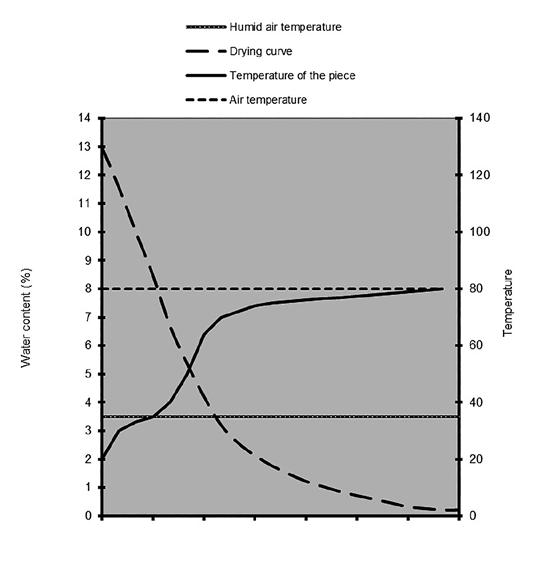
Constant drying speed phase
In this phase, the rate of migration of water to the surface is greater than the rate of evaporation, resulting in the formation of a thin film of water over the entire surface of the piece. The water that is eliminated is the interstitial water that is capable of flowing relatively easily to the surface of the piece, causing it to shrink.
This phenomenon is illustrated in Figure 2, which shows how the dimensions of a specimen change as a function of its water content (Bigot curve).
Decreasing speed phase
As the particles come closer together, the gaps through which water can pass are greatly reduced and the surface of the piece is no longer uniformly covered with water. Evaporation begins to take place within the thickness of the ceramic body, resulting in the migration of vapour to the surface. As the evaporation zone moves further towards the inside of the body, the drying speed decreases.
The heat transferred to the surface of the piece no longer serves to evaporate the water and instead raises its temperature to values close to the dry bulb temperature. During this time, shrinkage continues until the particles come into contact with each other, at which point the shrinkage of the piece ceases and porosity begins to form.
CWR 146/2022 46
Fig. 1: Drying tests
CWR INDIA 2023 sanitaryware
Fig. 2: Bigotcurve






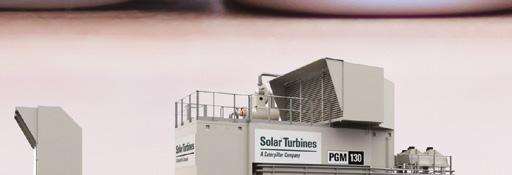

THE FUTURE IS TODAY Thanks to our technologies your company will benefit from H2 and flexible Power and Heat solutions that are ready for both today and tomorrow’s challenges. +2Million hours with high H2 fuel up to100% H2 +16000 Gas Turbines sold For more information and to locate the office nearest you: visit solarturbines.com; Call +41 91 851 1511 (Europe) or +1 619 544 5352 (US) email infocorp@solarturbines.com | www.solarturbines.com CHANGING the rules of the game
Phase during which the speed decreases and tends towards zero
This section of the drying curve tends asymptotically towards zero, corresponding to the process of elimination of both the residual interstitial water and the superficial film of water around the solid particles. Water evaporation now occurs exclusively inside the piece. In this case, care must be taken to avoid sharp increases in the internal pressure of the water vapour as the piece is liable to suffer violent breakage if the pressure exceeds the material’s mechanical strength. This for example is what happens when pieces explode after being introduced into the kiln while they are still too moist.
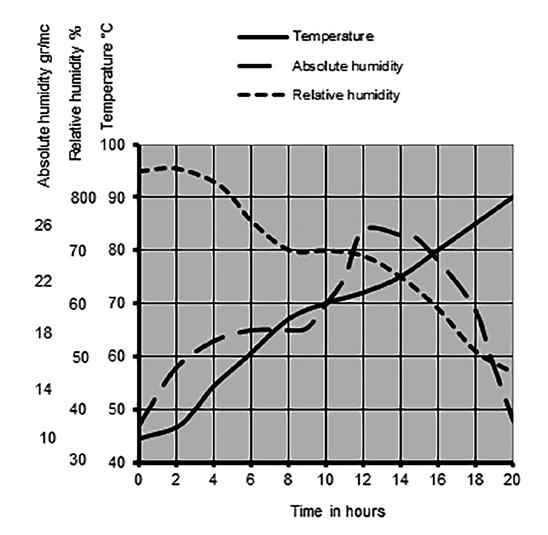
From these considerations, it is easy to appreciate that no matter how carefully the conditions and distribution of hot air are controlled, even the best drying treatment cannot ensure the uniform drying of a sanitaryware article. This is particularly true for items such as washbasins, bidets and WCs, which have large surface sections sheltered from the hot air flow. Uneven drying results in different degrees of shrinkage between one section of the surface and another , causing stresses in the ceramic body. When these stresses exceed the mechanical strength of the body, cracks or fissures are formed Drying must therefore be performed in such a way that the inevitable moisture gradients remain within acceptable limits. However, with traditional forced convection drying, this equates with longer cycle times. The pieces must therefore be heated with very humid warm air in order to even out the temperature throughout the ceramic body before the evaporation process begins. The relative humidity of the air Fig. 3: Exampleof
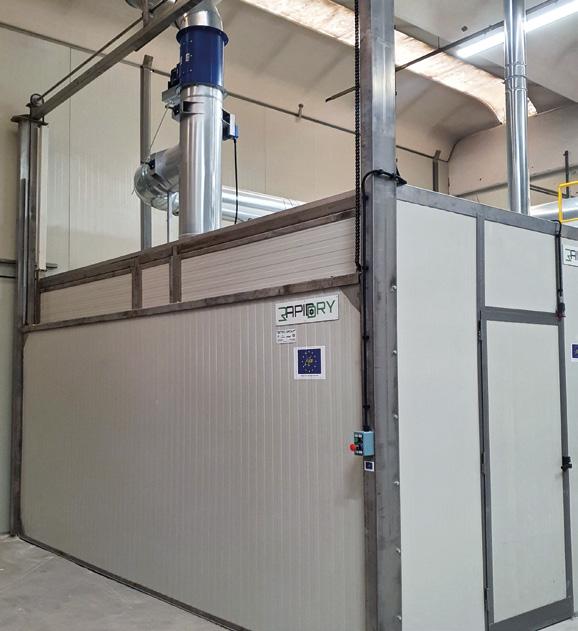
CWR 146/2022 48
CWR INDIA 2023 sanitaryware
drying curve

is then gradually reduced in order to initiate evaporation, resulting in drying curves such as the one shown in Figure 3.
❱ Traditional dryers vs. Rapid Dry
The purpose of dryers is to reduce the water content of the piece to final values of less than 1% by weight. Older machines do not have real control systems, but can be thought of as simple heated chambers capable at best of maintaining a constant temperature without humidity control. For this reason, drying cycles often have a duration of more than 14 hours and do not allow the introduction of excessively moist pieces. In addition, temperature uniformity within the chamber is only achieved by introducing large volumes of air, usually distributed through perforated grilles. This makes it necessary to significantly oversize both the intake fans and the heat generator, resulting in significant levels of electricity and natural gas consumption. The new Rapid Dry dryer is designed to address all these critical issues and brings advantages in terms of lower consumption and shorter drying cycle times
Drawing on its more than 30 years’ experience in the ceramic sector, Setec has optimised the dryer’s heat flows and significantly improved control of the various parameters using innovative management software . This brings the following benefits:
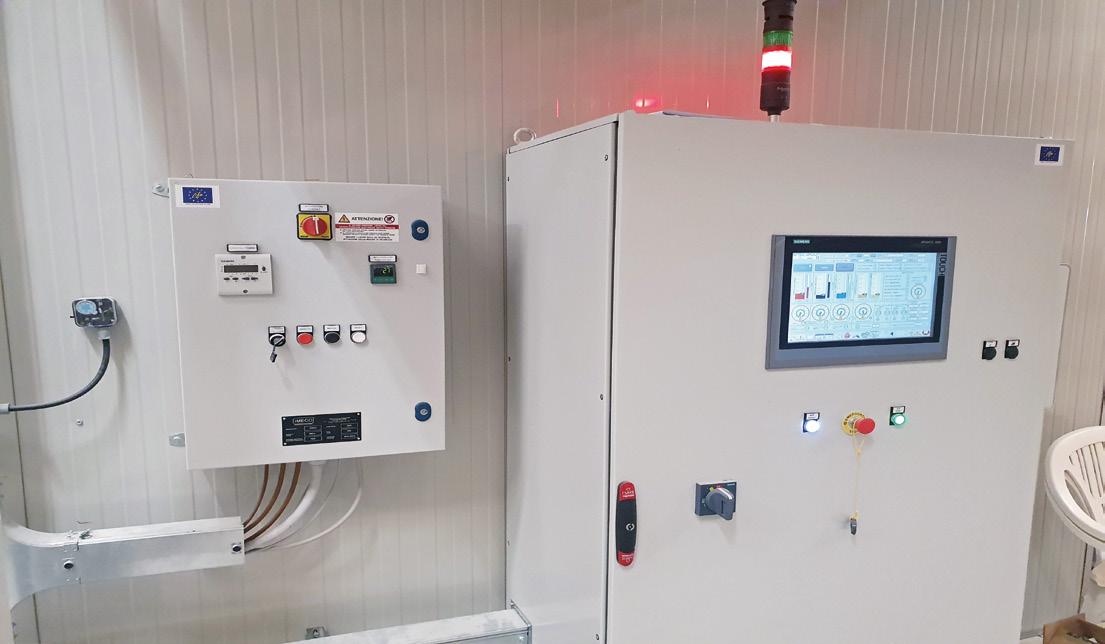
• the ability to turn the heat generator on/off so that it supplies only the minimum amount of heat required and only when needed;
• reduction in speed/switching off of all electric motors (cones and fans), which only operate when necessary;
• autonomous temperature and humidity control using water mist to control the initial steps in the cycle in particular;
• improved homogeneity of the chamber by using motorised
50 CWR INDIA 2023
cones to create adequate fluid turbulence inside the dryer;
• optimisation of heat flows into and out of the chamber dryer.
❱ Installation of the new Rapid Dry: results
The Rapid Dry dryer was started up in early 2022 thanks to the cooperation of the Civita Castellana-based company F.A. Ceramica which tested the dryer in its factory. The results meet and significantly exceed the aims of the Life project:
• Drying cycle under 8 hours,
• Heat consumption of 98 kcal/kg compared to the 288 kcal/kg of older generation dryers,
• Electricity consumption of 0.003 kWh/kg compared to the benchmark figure of 0.019 kWh/kg. Clearly, these very positive improvements are the combined result of the innovations that have been introduced together with a significant reduction in drying times compared to standard dryers. This results not only in significant cost savings, but also in a drastic reduction in CO2 emissions . 5
Innovating industrial process through sustainable and digital solutions



YOUR GLOBAL INDUSTRIAL PARTNER SINCE 1973 SUSTAINABILITY DIGITALIZATION INNOVATION
MISSION S u p p o r t i n g i n d u s t r i e s i n t h e o n g o i n g p r o c e s s o f e n e r g y a n d p r o d u c t i o n e f f i c i e n c y i m p r o v e m e n t , t h r o u g h t h e t e c h n o l o g i c a l a n d s u s t a i n a b l e d e v e l o p m e n t , t o a v o i d u n e x p e c t e d d o w n t i m e s . Contact us at: export@gmmspa.it sanitaryware
VISION
ADVERTISING
Safer and more versatile and sustainable tunnel kilns
The continuous ceramic sanitaryware kilns developed by Sacmi-Riedhammer combine the advantages of higher output and lower consumption while allowing for a customised approach to innovation in keeping with market and product trends and social and environmental conditions.
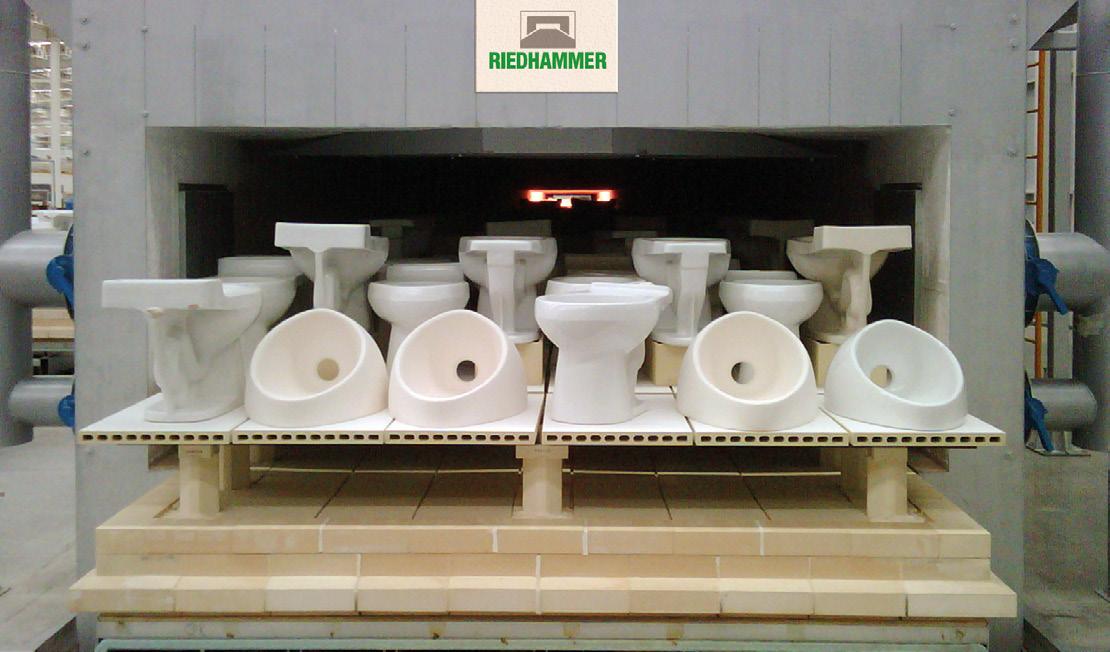
Sacmi-RH tunnel kilns make a vital contribution to energy efficiency and productivity and have evolved in recent years to achieve greater versatility , a drastic reduction in consumption and an ability to adapt to the general trend towards factory automation
❱ On/off & low/high production
Historically designed to operate 24/7 at full load, tunnel kilns for firing ceramic sanitaryware are now evolving in a quite different direction. For example, they can be switched off at weekends and above all allow for dynamic and flexible load management according to production trends and market re-
52
Sacmi Whiteware (Imola, Italy))
lqjf{kr]
CWR INDIA 2023
T;knk fofoèk vkSj fVdkÅ Vuy Hkfë;ka
quirements.
While the idea is simple, implementation requires specific design solutions to reduce diseconomies when the kiln is shut down and to allow it to be used dynamically according to real production requirements. One interesting approach to flexible production involves designing continuous kilns capable of operating using only part of their installed capacity
For example, by adopting modular design and independent management of the different areas, just an 80-metre section of a 100-metre long kiln can be used to handle a given production flow at a given time. This means that 20% of the kiln can be left turned off without affecting the overall efficiency of the process.
❱ The environmental factor
With thousands of machines installed in the factories of leading industry players worldwide, Sacmi-Riedhammer’s sales and customer service network makes a real difference in terms of the ability to meet customers’ needs with specific design solutions. Examples include the solutions adopted to eliminate kiln purge time after an unexpected stoppage (for example due to a power failure, which in some countries may even occur several times a day). The new design together with the configuration of the gas train and the safety systems adopted makes it
possible to avoid the purge process while fully complying with applicable safety standards
The kiln is designed to ensure both operator safety and environmental protection. To avoid workplace accidents and the risk of industrial disasters caused by natural events (earthquakes, floods etc.), the Sacmi-Riedhammer range includes a series of specific optional devices such as gas leak detectors (the biggest risk in the event of an earthquake), ceramic fibre kiln linings and fire-fighting systems. In the areas of the world most susceptible to these risks, where specific regulations are often in force, numerous Sacmi-RH kilns have already been supplied with this type of equipment.
❱ Safety and performance
On modern Sacmi-RH kilns, safety and performance go hand-
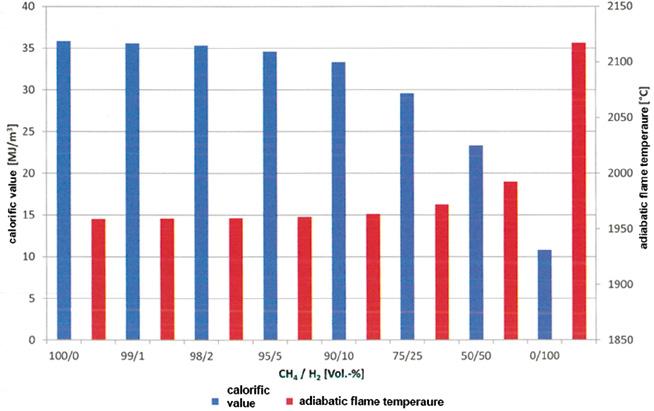
53 sanitaryware CWR INDIA 2023
System for recovering heat from the kiln
in-hand. This means using materials certified according to international standards such as EN, JIS, OSHA and FM. Furthermore, the materials used to build the kilns are free from exposed volatile fibres, they do not produce harmful dust, and they are made with a minimal quantity of VOCs (volatile organic compounds).
Moreover, thanks to the technical and design consultancy of Sacmi’s Filtering, Energy & Environment Division, the kiln can be supplied together with complete systems for heat recovery and exhaust gas filtering. The main advantage of these solutions is the possibility of radically improving the factory’s energy and environmental performance.
Overall, the combined installation of kiln heat recovery systems can lead to energy savings of up to 25% compared to a factory where the dryers and spray-dryers are powered exclusively by natural gas.
As regards emissions, Sacmi’s filtering systems are capable of controlling a wide range of substances, from inorganic compounds such as acidic gases (which are treated with bag filters) to the latest solutions for the treatment of volatile organic compounds (VOCs) carried out by a self-recovering after-burner system with more than 95% efficiency
The different types of plant can be installed in a combined set-up to achieve the best results during production.
❱ Smart solutions & automation
As mentioned, one of the advantages of the Sacmi-Riedhammer approach is that it delivers tailor-made innovations capable of responding to the real needs of customers and the market. One of these is the development of a multilayer kiln design , a configuration that enables the machine’s efficiency to be increased while reducing its specific consumption
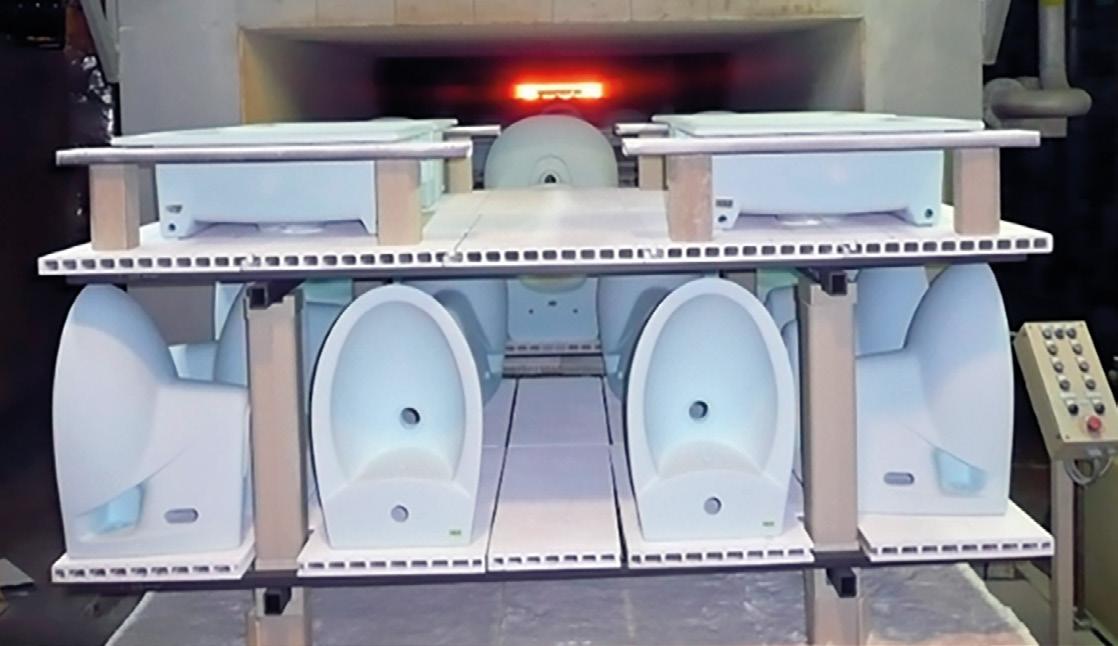
54
CWR INDIA 2023
Multilayer kiln design
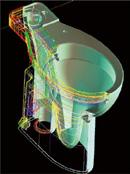
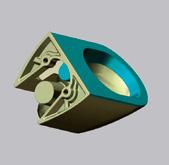
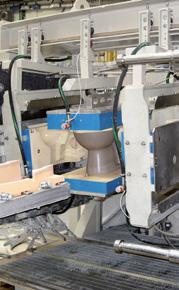

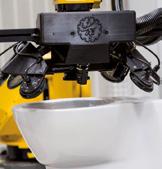
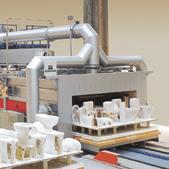
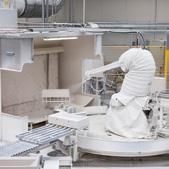
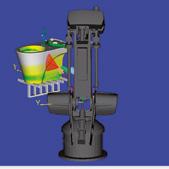


Productdevelopment Modelling Resinmoulds Castingand handling Glazing Off-lineTechnology Firing Innovation Sorting THE COMPLETE SACMI SOLUTION FOR YOUR SMART SANITARYWARE FACTORY www.sacmi.com ENDLESS INNOVATION SINCE 1919 SACMI manufacturing technology: the advanced sanitaryware production solution, from single machines to complete lines. SACMI: experience and complete solutions for your product Firing Off-line Technology Modelling Casting and handling Sorting Innovation Product Development Resin moulds Glazing





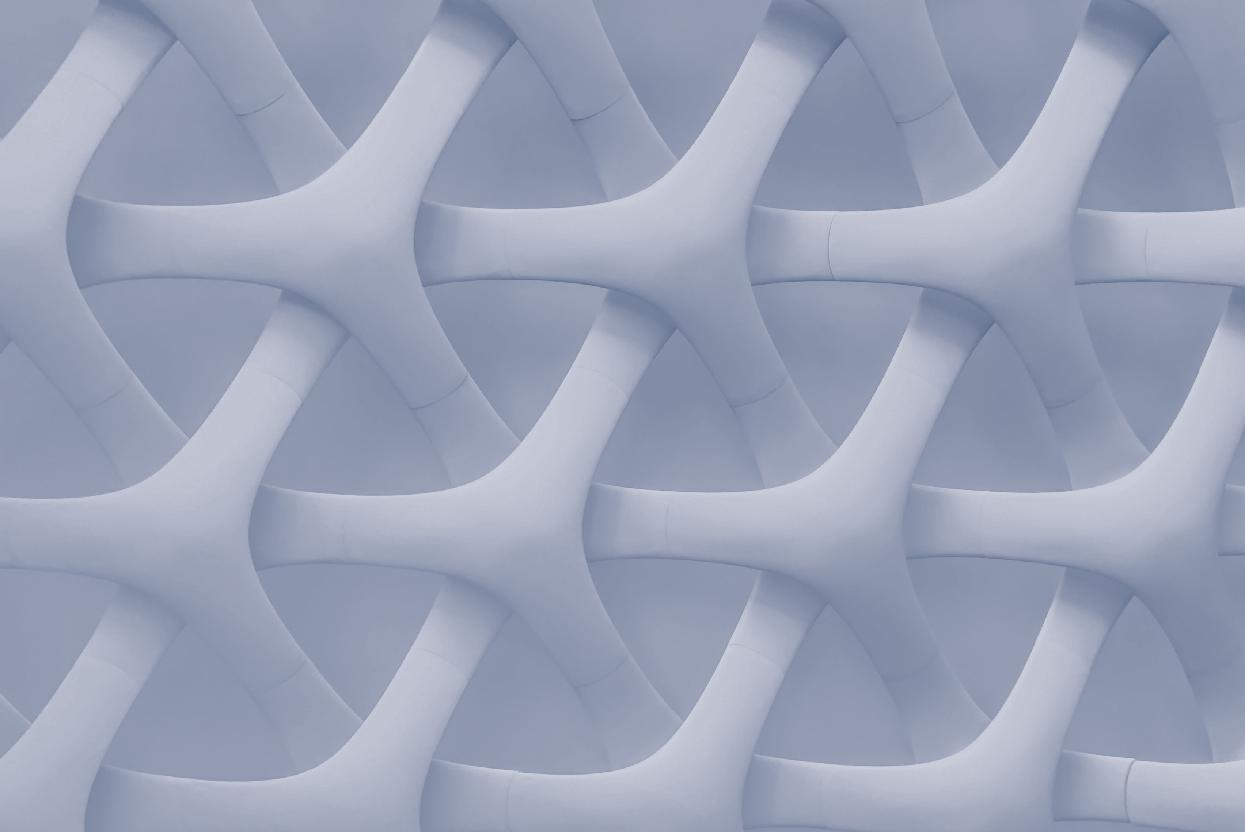
Higher productivity in sanitary ware.
Casting rate increase
Moisture uniformity in the formed body









Consistency of slip parameters
Rheology under control
sanitaryware
383
ADVERTISING
Reolam CS
Reolam CS 383
efi cretaprint
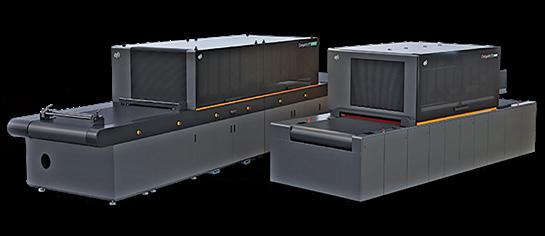

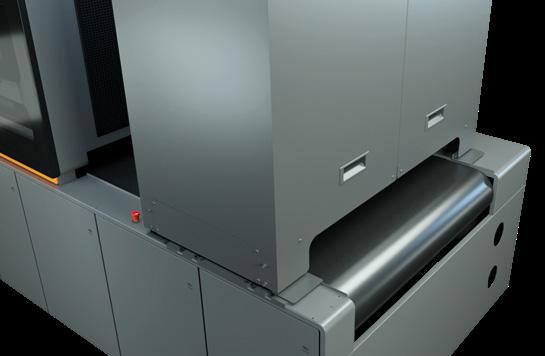

CWR INDIA 2023 58 Latest technoLogies
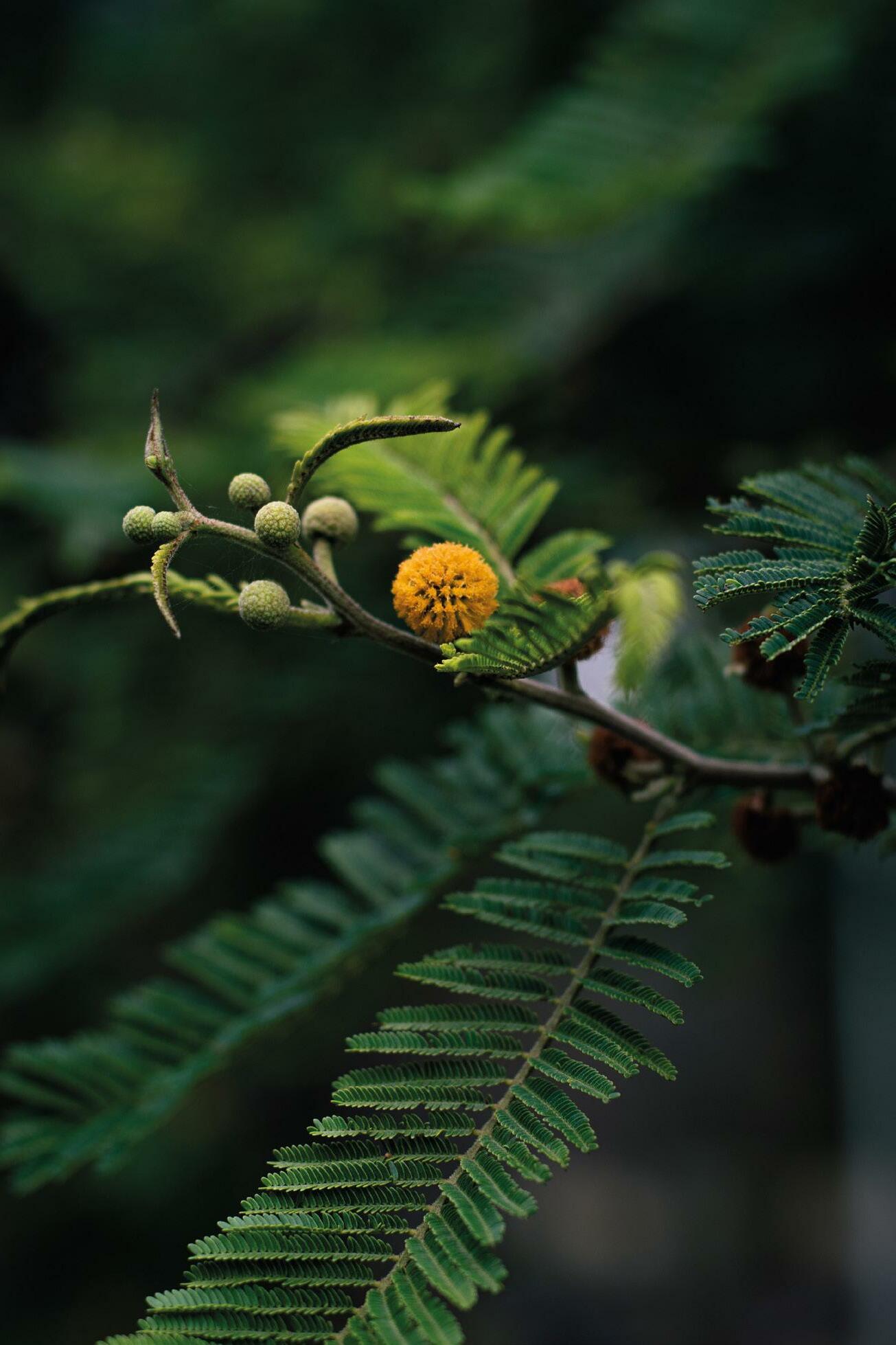

The dedicated and professional team you already know, is at your disposal. Hybrid Ceramic Ecosystem EFI Cretaprint | Tel. +34 964 340 264 www.efi.com/cretaprint · creataprintsales@efi.com Rainforest: Preserves for millennia its climatic environment EFI Cretaprint is VITAL A reliable, essential technology. Digital printing that brings life to your tiles. VITAL
Vibrotech

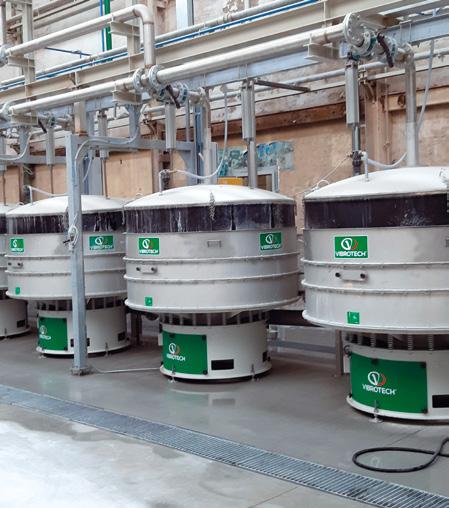
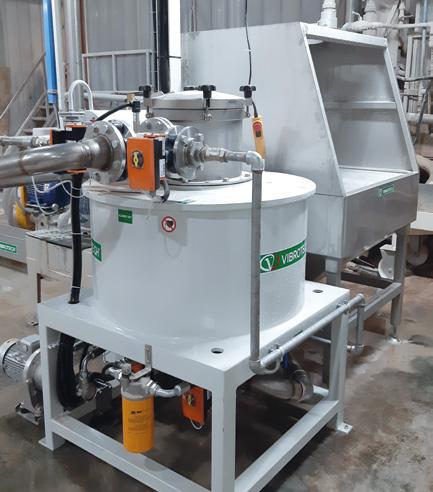

CWR INDIA 2023 60 Latest technoLogies
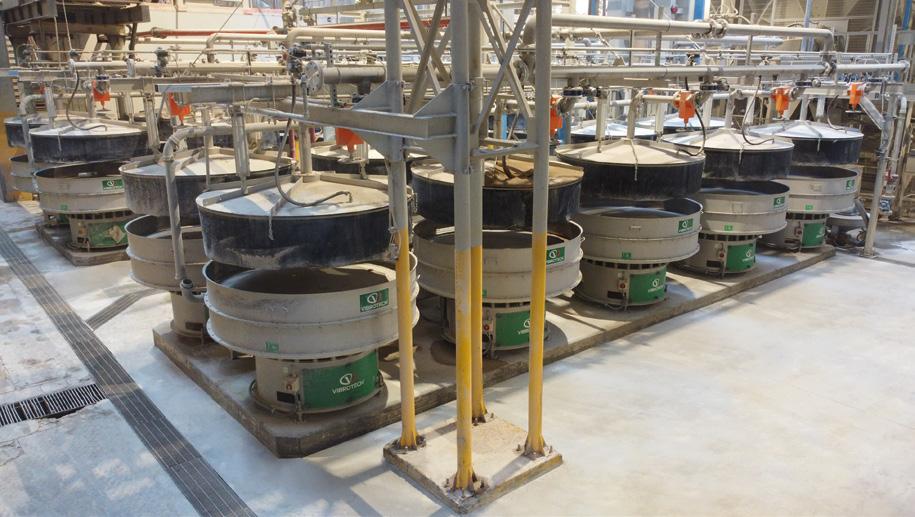


®



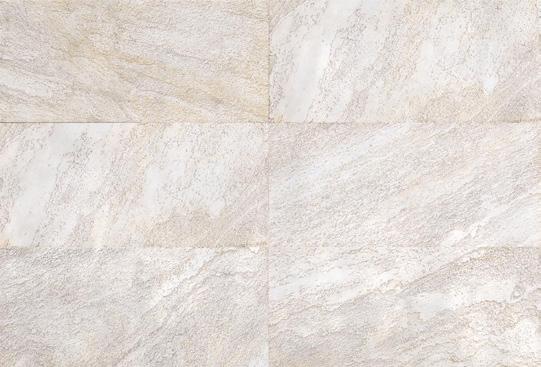

CWR INDIA 2018 62 Latest technoLogies smaLticeram
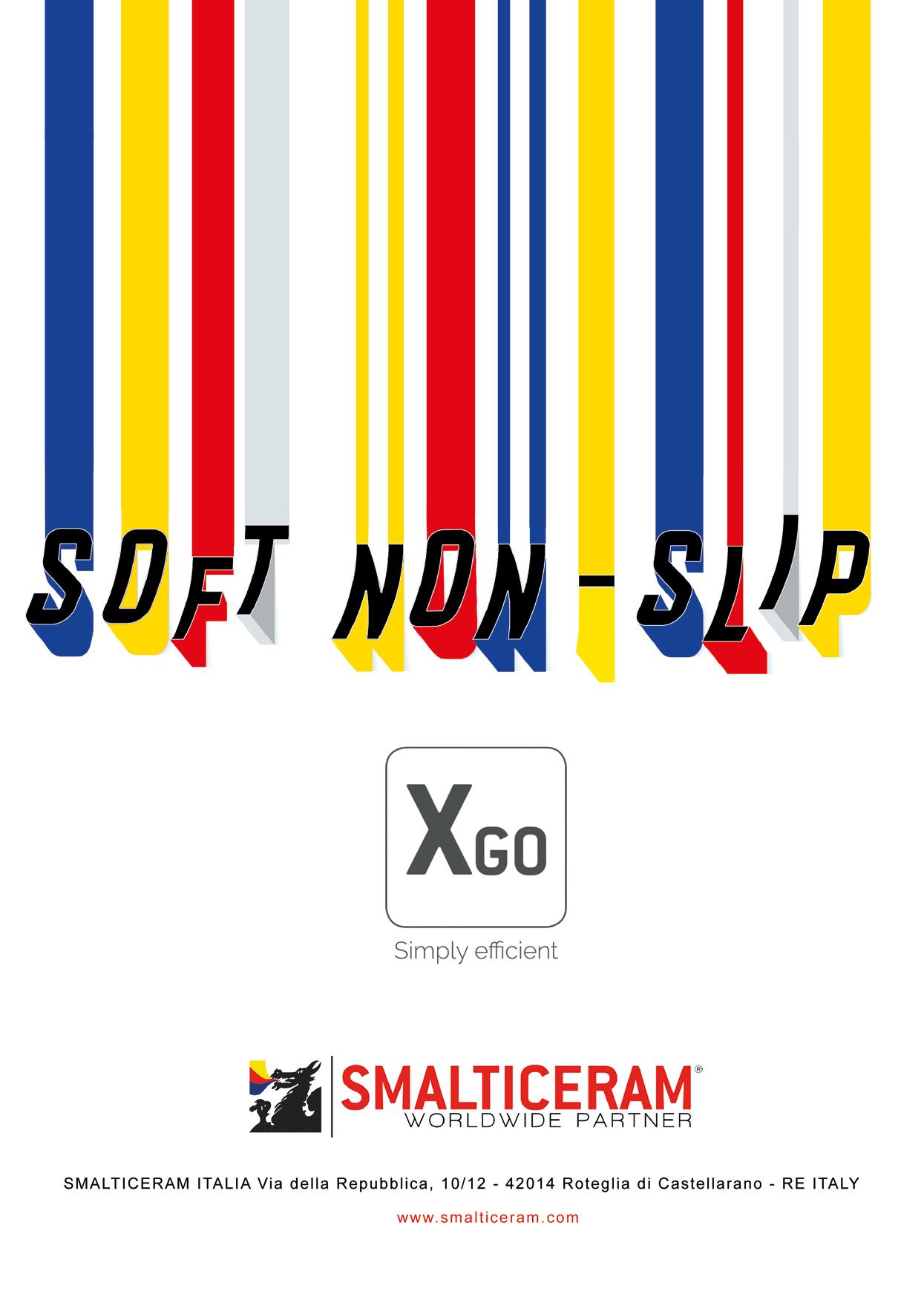



CWR INDIA 2018 64
syneco
projecta
DRYFIX by Projecta
The DRY FIX series is the most extended digital solution for grits & powder application in single pass. Available in 4 different sizes (700 mm, 1200 mm, 1400 mm & 2100 mm), it allows reaching new finsihes as well as smooth strcutures when application is done just after the dryer.
Specifications
Handles substrates (media) up to 2065 mm (81,3 inches) wide and 160 mm (6,3 inches) high Printing speed up to 60 lm/min (DF 70 & DF 112)
Features & Benefits

Optional
G Synchro: it allows associtating each one of the patterns of a model to different media based on some shape differences, to sync up the color design with the grit application
High discharge Kit: allows very high discharge up to 3,7kg/m2 (DF 70)
Table IN & OUT: in case of very large media, a table-in & table-out options are provided on demand Jumbo bag/silos: different silos are available to adapt the DRY FIX unit to customers’ production requirement
Fluid deposits: for the very demanding production processes, a large fluid deposit (1.300 L) is also available

CWR INDIA 2023 65
Latest technoLogies
poppi cLementino



CWR INDIA 2018 66
inco COLOUR INNOVATION INDUSTRY Latest technoLogies


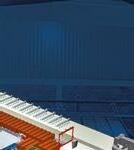


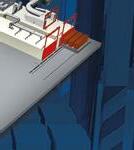


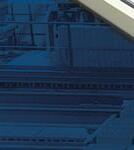


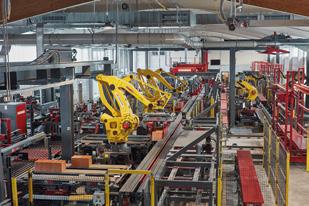

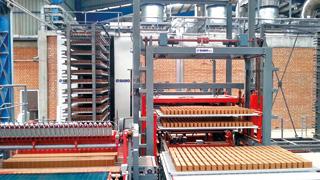
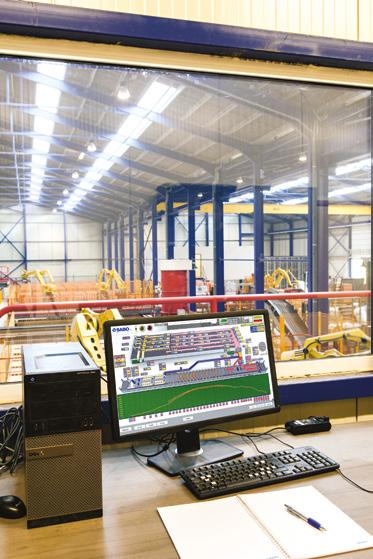
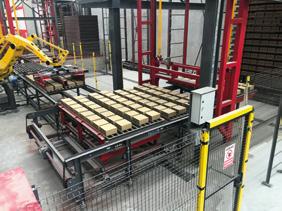
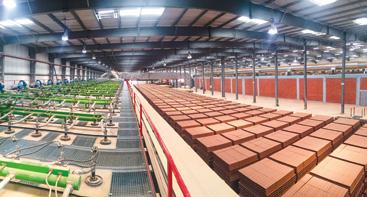
ADVERTISING
mineraLi industriaLi engineering

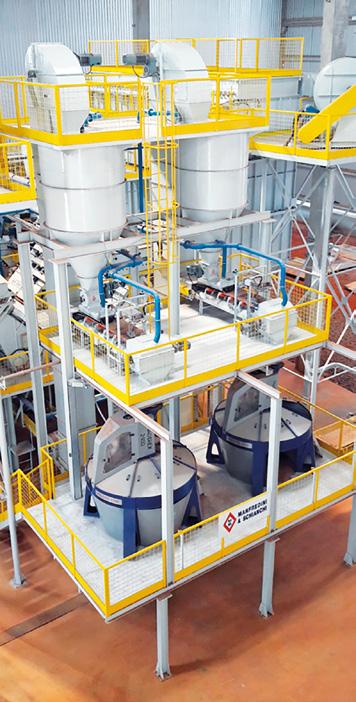

CWR INDIA 2018 68
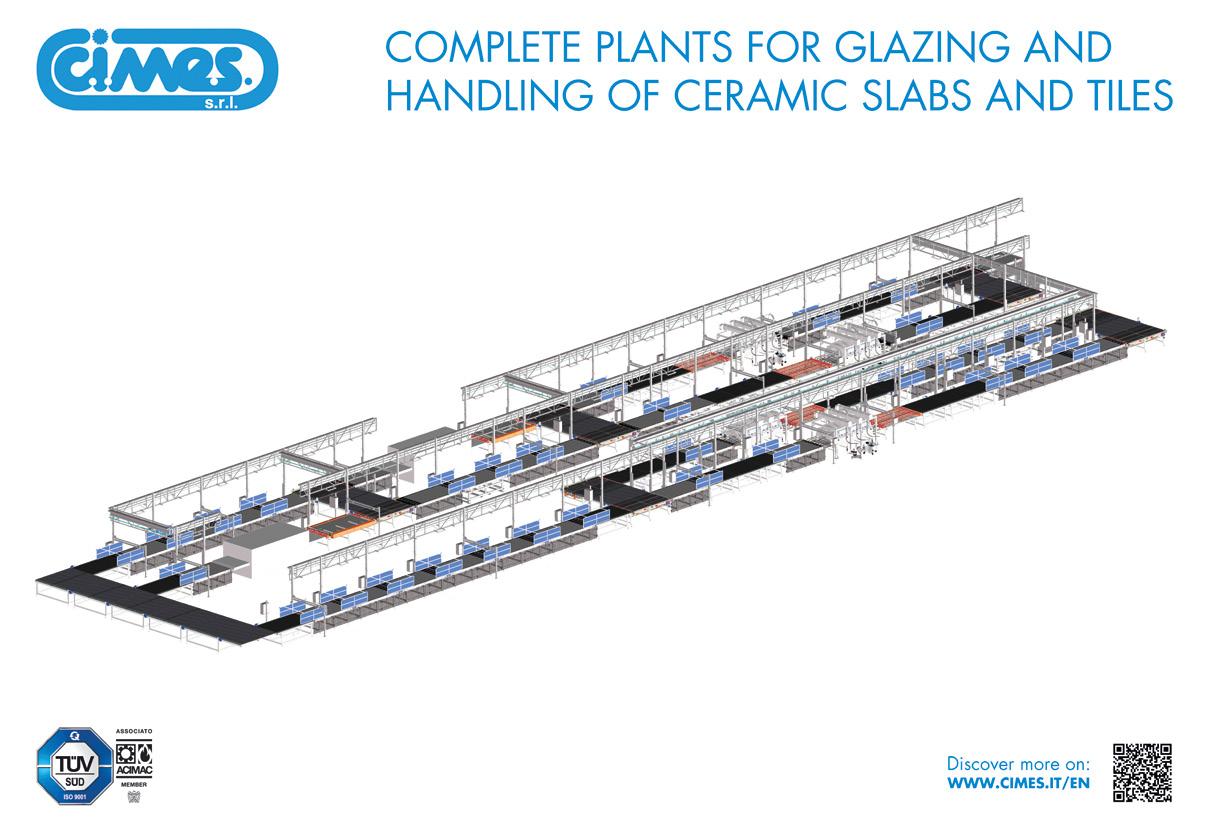
Latest technoLogies ADVERTISING
officine smac
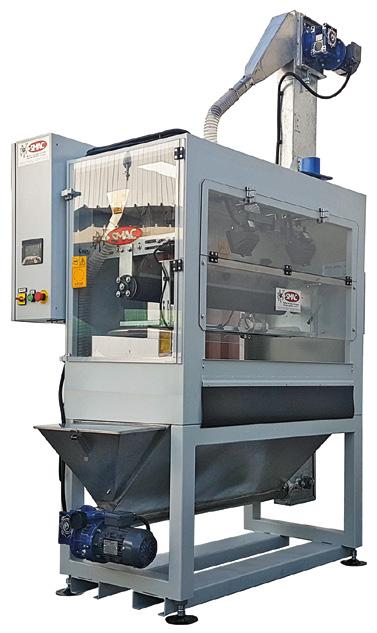



CWR INDIA 2018 70
Latest technoLogies CWR INDIA 2023 71 advertisers list Bmr 39 Certech 61 Cimes 69 Efi Cretaprint 59 Esmalglass-Itaca Group 2 Gmm Group 51 Inco 37 Inter Ser 19-49 LB Group 1 Lamberti 57 Lingl 40-41 Minerali Industriali Engineering 43 Off. Smac 5 Poppi Clementino Inside back cover Sabo 67 Sacmi Back cover - 55 Setec 44 Smalticeram 63 Solar 47 Syneco 4 System Inside front cover Tecnofiliere 72 Torrecid 29 Vidres 6
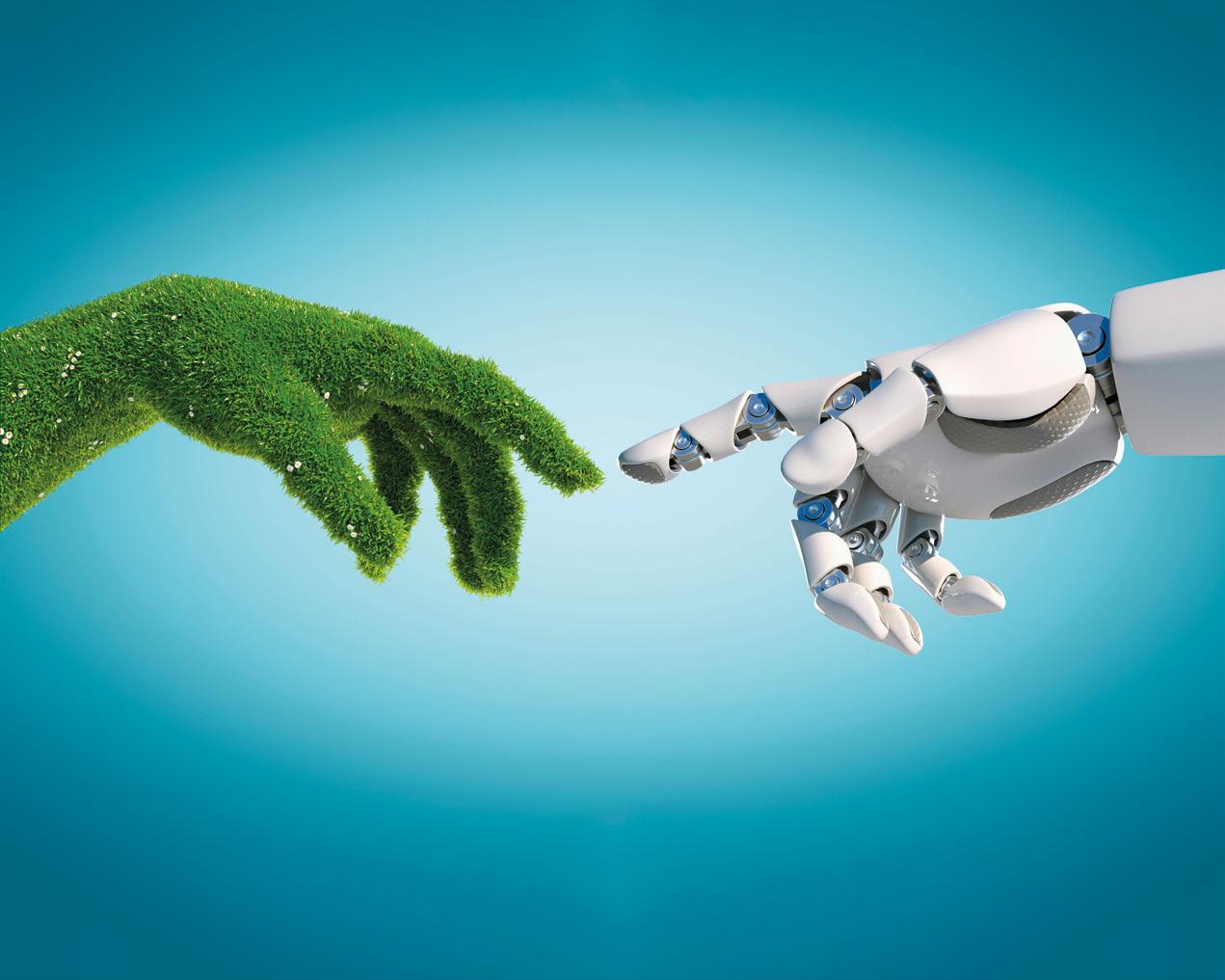

TECNOFILIERE is strongly committed to eliminating the toxic hexavalent chromium from the industrial process of bricks production. CHROMIUMFR E E · MUIMORHCRF E E · TECNOFILIERE S.r.l. - 41016 Novi di Modena (MO) ITALY - Via Provinciale Modena, 57/A Tel. +39059677797 - fax +39059677759 http://www.tecnofiliere.com - tecnofiliere@tecnofiliere.com ALWAYS ONE STEP AHEAD
CERAMIC
DIES AND RELATED PRODUCTS FOR THE HEAVY CLAY AND
INDUSTRIES
LET’S GROW TOGETHER
Saving
Thermal Energy Recovery System “Intelligente”
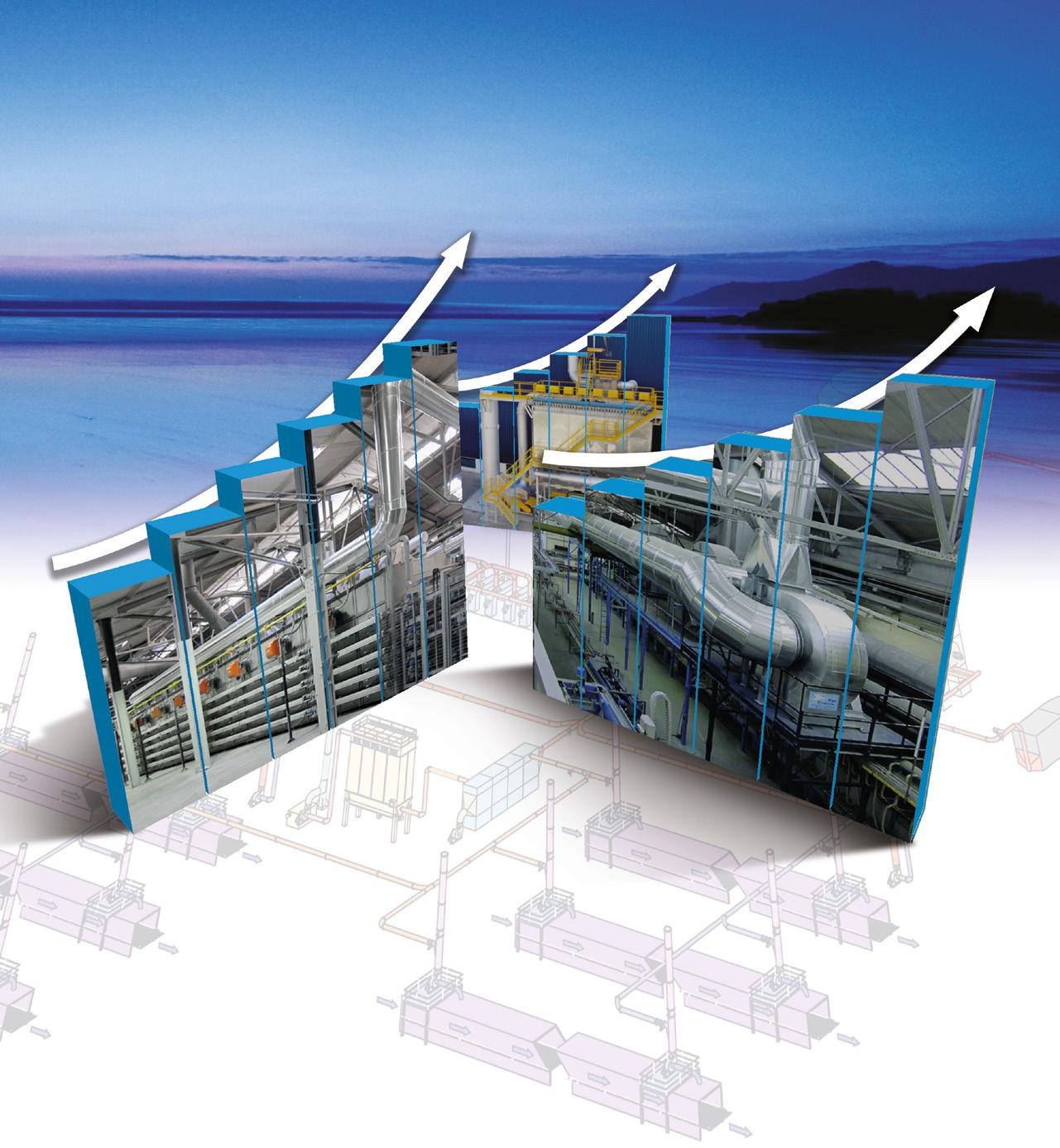
Sleeve and Box Filters for Dust and Fumes
Heat Exchangers

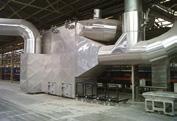
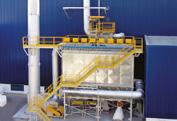
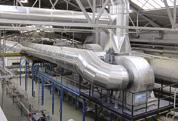
Control and Supervision Instruments

Water Purification Systems
Washing Towers and Scrubbers
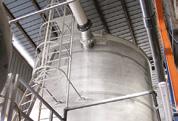
Energy Recovery Systems and Filtration www.poppi.it
energy to save the world
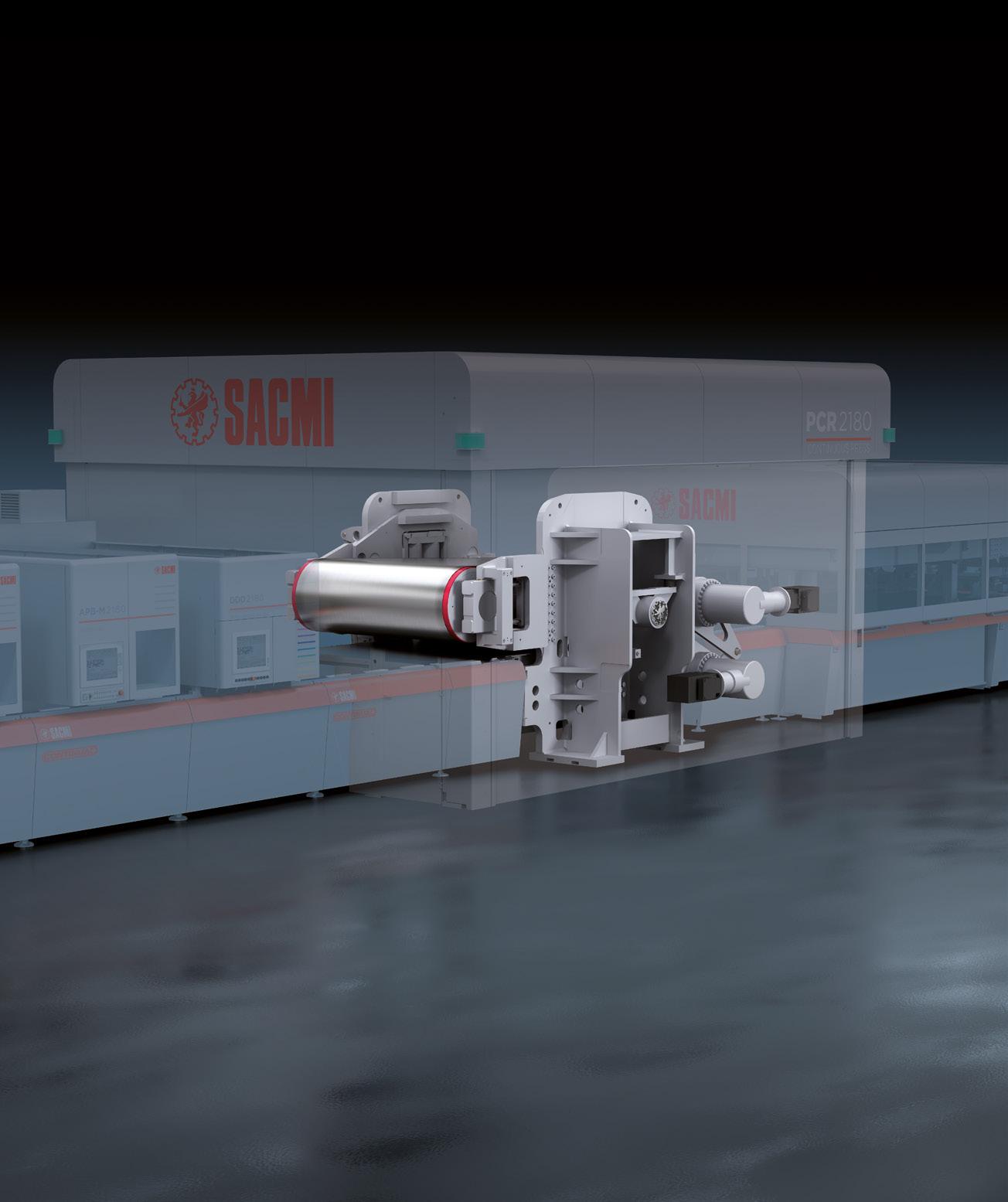

ENDLESS INNOVATION SINCE 1919






 Giancarlo Pradelli
Giancarlo Pradelli




















 by Paola Giacomini, Editor - p.giacomini@tiledizioni.it
by Paola Giacomini, Editor - p.giacomini@tiledizioni.it










































































































































































